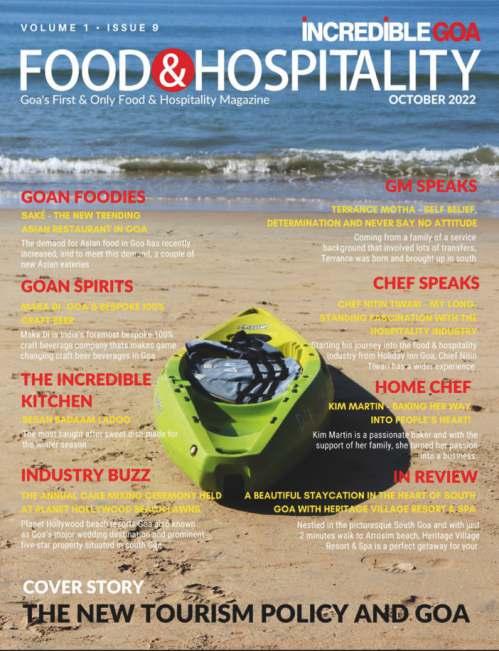THE FIRST LADY PRESIDENT
GOA’S APEX BUSINESS HUB
IN FOCUS
ASHRAYA ADHAR SCHEME
Empowering Goa's Tribal Homes, One Brick at a Time
LOSING GROUND Who's Really Buying Goa?
SPECIAL STORY FEATURE
IS GOA STILL AFFORDABLE?
A Ground Reality Check for Locals and Tourists
















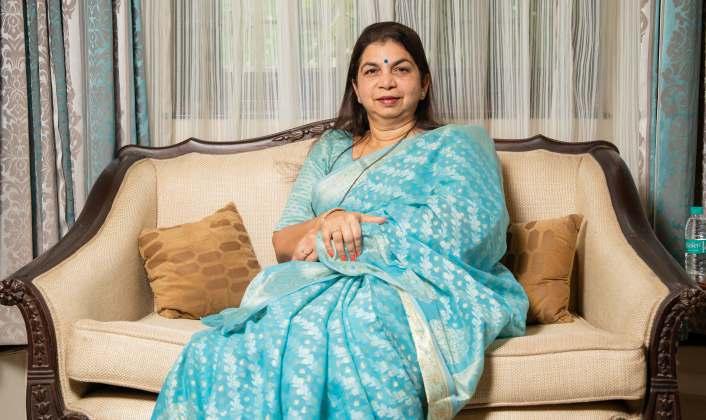



GOA BUZZ
YOUNG INNOVATORS SHAPE GOA'S CREATIVE FUTURE AT MAKER'S ASYLUM GOA TOURISM MAKES A STRONG IMPRESSION AT TTF KOLKATA 2025
TAJ CROWNED WORLD'S STRONGEST HOTEL BRAND 2025 BY BRAND FINANCE UK
CM PRAMOD SAWANT PUSHES FOR DIGITAL TAXI REFORM AFTER SHOCKING ASSAULT ROHIT BHANDIYE'S NEW BOOK 'SPORTS COMMENTARY' LAUNCHED
MANIPAL HOSPITAL GOA UNVEILS CUTTING EDGE ROBOTIC FOR KNEE REPLACEMENTS
22 SPECIAL STORY LOSING GROUND Who's Really Buying Goa?
IN FOCUS
ASHRAYA ADHAR SCHEME
Empowering Goa's Tribal Homes, One Brick at a Time
In the dazzling mosaic that is Goa, where the sea sings its lullaby to palm-fringed shores and heritage structures whisper tales of time, there exist quieter, often overlooked corners. These are the homes of Goa’s Scheduled Tribe (ST) communities...
HOSPITALITY BUZZ
A SYMPHONY BY THE SAL DINING AT THE FISHERMAN'S WHARF, CAVELOSSIM
SUNDAYS DONE RIGHT THE LAZY BRUNCH AT TAJ CIDADE DE GOA
MONSOON MOODBOARD ON A PLATE THE PARK CALANGUTE GOA
38 SUSTAINABLE GOA
MUD, LIME & LOVE CHOOSING NATURAL BUILDING MATERIALS OVER CONCRETE
5 WAYS SUSTAINABLE MANUFACTURING CAN REDUCE CARBON FOOTPRINT
52 BUSINESS BUZZ ITAT HOSTS ALL INDIA MEMBERS' CONFERENCE 2025 IN GOA
ASSOCHAM GOA WRAPS UP 'BRIDGING HORIZONS' WITH INSIGHTFUL AI-FOCUSED
KILOWOTT EXPANDS IN GOA WITH NEW OFFICE IN MARGAO
COLUMNS



56 FINANCE
54 FITNESS AGRICULTURE AND GST: EXEMPTIONS WHY EXERCISE IS WISE FOR TEENS
58 REAL ESTATE THE ASSAGAO BUBBLE: WHAT HAPPENED?
60 HEALTH RECLAIMING HEALTH WITHOUT LOSING THE UTERUS



EDITOR & PUBLISHER
Rajesh Ghadge rajesh@rajeshghadge.com
FINANCE &ADMIN
Rajeshree Naik Ghadge info@incrediblegoa.org
CONTENT WRITERS
Aditi Malhotra Aakash Ghadge
Gauri Ghadge
write@goaprism.com
The Heart of Goa Still Beats Strong
is about a single wall, a safer home, a stronger foundation, one brick at a time.
LAYOUTS & DESIGN
GPDM - A MEDIA COMPANY
info@gpdm.in
SALES & MARKETING
Team Incredible Goa sales@incrediblegoa.org CONTRIBUTORS
Norbert D’Souza CA Gaurav Kenkre
Prashant Kalra
Niharika Sachdeva Dr. Charudutt Sambhaji Saloni Pai
write@incrediblegoa.org
CIRCULATIONS
Aakash Ghadge subscribe@incrediblegoa.org
PHOTOGRAPHY
TEAM IG Info@incrediblegoa.org
STOCK IMAGES www.freepik.com
403001 South Goa : FIIRE Business Incubator, Fatorda - Goa. 403602 Call: +91 89990 85172 / 96651 83739 Email: info@gpdm.in
As we step into another edition of Incredible Goa, in our 10th m i l e s t o n e y e a r , t h e responsibility to reflect the changing rhythm of this land weighs heavier than ever. Goa, long seen as a postcard-perfect paradise, now finds itself at a delicate crossroads between what we are becoming, and what we may be leaving behind. Our cover story this month celebrates a landmark moment in Goa’s business history, the ascent of Mrs. Pratima Dhond as the first woman president of GCCI. Her journey, layered with grace, tenacity, and silent revolution, is not just a tale of personal achievement but a r e m i n d e r o f t h e d e e p e r possibilities within our society when women lead, not as tokens but as torchbearers.
Equally, our special story, “Losing Ground,” addresses one of the most unsettling realities we ’ re confronting today: the quiet but rapid transformation of Goa’s land, identity, and community fabric. We have not taken sides; we have presented facts, voices, and concerns that need urgent reflection. Because behind every luxury villa with locked gates lies a field that once fed a village, or a home that echoed with ancestral stories. It’s not about blaming outsiders, it’s about protecting insiders.
Then there is the silent strength of Goa’s tribal communities
Our In Focus feature on the Ashraya Adhar Scheme sheds light on how dignity begins with a roof. Real development isn’t always glamorous; sometimes it
As always, culture finds its voice through the artists and thinkers among us In our Interview section, young Medhaj Dempo reminds us that introspection is a form of activism too His journey, rooted in classical music, lifted by spiritual thought, resonates deeply in a time when speed often eclipses substance. On the hospitality front, Goa’s evolution continues to impress. From Chef Lokendra Oli’s soulsoaked monsoon menu at The Park Calangute to the Sunday brunch experiences at Taj Cidade de Goa, we are seeing an industry that is not only about food, but feeling. Experiences matter. Memories matter. And as Goa plays host to global footfalls, we hope it continues to feed the soul as much as the senses.
From technology milestones to sustainability movements, from vibrant youth initiatives to real estate cautionary tales, every page this month is a pulse point of Goa today. Some stories will comfort you, some may stir d i s c o m f o r t T h a t ’ s w h a t Incredible Goa has always aimed to do: not just entertain, but engage. Not just report, but reflect.
Because if Goa is to evolve without losing itself, we must all become participants and not just observers in its future. Until next time, Happy Reading…
Rajesh Ghadge Editor


Rajesh’s long journey began with an early realization of his writing skills and nearly a superhuman power of vivid imagination; which together led to the birth of a successful media portal. His never-ending spree of learning has made him efficient in varied fields like coding, designing and also marketing. He fuels himself with continuous reading being a history fanatic and bouts of music and movies. Acting as a one-man army he prizes work over almost everything.
rajeshghadgeofficial
rajeshghadgeofficial
rajeshghadge
www.rajeshghadge.com
rajesh@rajeshghadge
p rohibited All the images unless otherwise indi cated are used for illustration purposeonly Incaseyoufeelthatanyimage/sor content/sshouldnotbethere/needsduecredits/ havingcopyrights, you may pleaseimmediately inform thesameto editor/publisherin written format,

YOUNG INNOVATORS SHAPE GOA'S CREATIVE FUTURE AT MAKER'S ASYLUM

A s G o a a c c e l e r a t e s i t s transformation into a hub of innovation and creativity, Maker's Asylum in Moira is giving shape to this vision through its unique, hands-on learning programs.
A l i g n e d w i t h t h e S t a t e G o v e r n m e n t ' s ambition spearheaded by Hon'ble IT Minister Shri Rohan A.
Khaunte to position Goa as India's Creative Capital, the initiative is empowering young minds to think, build, and lead through innovation.
Since its move to Goa in 2021, Maker's Asylum has welcomed 753 students from 15 countries, 150 schools, and 50 cities. This summer, five dynamic cohorts of
its flagship Innovation School brought together 77 young makers aged 13–18, who worked in 24 teams to develop real-world solutions. Their projects included
A I w e a r a b l e s , d r o n e s f o r emergency healthcare, and assistive technologies for the d i f f e r e n t l y - a b l e d e a c h a testament to the power of creativity combined with purpose.
Guided by experts from MIT Media Lab, Cambridge, IIT Bombay, and more, the program offers an environment that blends cutting-edge tech like 3D printing, robotics, and laser cutting with traditional skills like carpentry and electronics.
“Goa's creative energy makes it the perfect home for a maker m o v e m e n t , ” s a y s Va i b h a v Chhabra, Founder of Maker's Asylum. “Here, learning becomes an act of building rooted in community and driven by real impact.”
To celebrate this spirit, Maker's
GOA TOURISM MAKES A STRONG IMPRESSION AT TTF KOLKATA 2025
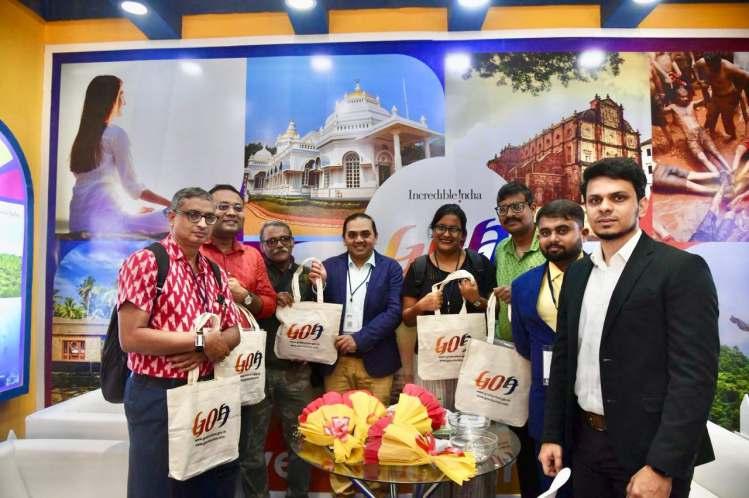
Goa Tourism made a striking impact at the Travel and Tourism Fair (TTF) Kolkata 2025, unveiling a vibrant pavilion that reflects the s t a t e ' s e v o l v i n g t o u r i s m vision—centered on sustainability, cultural richness, and digital innovation. Held at Biswa Bangla Mela Prangan, TTF Kolkata is one of India's largest travel trade
exhibitions, drawing tourism stakeholders and professionals from across the nation.
Representing Goa at the event were Shri Dhiraj Wagle, Deputy Director of Tourism, and Shri Akshay Govenkar, Marketing Manager, GTDC, who interacted with trade visitors, highlighting Goa's shift toward responsible
and regenerative tourism. Themed around the message that Goa is not just a destination but an experience, the Goa Pavilion captivated visitors with narratives of monsoon tourism, hinterland trails, spiritual circuits, and community-based travel. The idea was to present Goa beyond its beaches—celebrating its rich heritage, natural diversity, and evolving tourism offerings.
I n c o r p o r a t i n g m o d e r n engagement tools, the pavilion featured QR-based information guides and immersive Virtual Reality (VR) zones, allowing v i s i t o r s t o e x p l o r e G o a ' s landscapes, festivals, and traditions in an interactive, techforward format.
Shri Kedar Naik, Director of Tourism, shared, “Goa Tourism is s h o w c a s i n g a r e n e w e d identity one that champions authenticity and sustainable growth Through spiritual trails, m o n s o o n c a m p a i g n s , a n d
Asylum will host two open events: Repair Café (July 12, 6 PM) — a sustainability initiative where people can repair broken items with student guidance. Open House (July 13, 2 PM) — a showcase of student-led innovation projects. Applications for the Spring & Summer 2026 cohorts of the Innovation School are now open, continuing the journey of turning G o a i n t o a c r e a t i v e a n d innovation-driven powerhouse.
heritage circuits, we ' re inviting travellers to explore a deeper, more meaningful Goa.”
Over the next two days, the Goa Tourism team will continue to engage with travel agents, tourism boards, and trade professionals to forge new collaborations and promote Goa as India's most dynamic and future-ready tourism destination. Goa Tourism invites all trade partners and travel enthusiasts to experience this new spirit at TTF Kolkata 2025—where innovation meets tradition, and authenticity shapes every journey.

TAJ CROWNED WORLD'S STRONGEST HOTEL BRAND 2025 BY BRAND FINANCE UK

Taj, the crown jewel of Indian Hotels Company Limited (IHCL), has once again etched its name in global hospitality history by being ranked the World's Strongest Hotel Brand in the Brand Finance 'Hotels 50 2025' report. This marks the fourth time that Taj has earned this prestigious title, reaffirming
its position as a timeless symbol of
hospitality excellence.
The announcement comes from Brand Finance UK, the world's
consultancy, whose annual report evaluates and ranks the most valuable and powerful hotel
brands globally.
In a moment of dual distinction, Taj has also been named India's Strongest Brand across all s
unmatched resonance with both domestic and international guests.
Mr. Puneet Chhatwal, Managing D
“Taj is more than a brand—it's an e m o t i o n G u i d e d b y t h e philosophy of 'Tajness,' we continue to pioneer responsible change, create value, and shape the future of hospitality This global recognition reflects our commitment to sustainability, e x c e l l e n c e , a n d I n d i a n hospitality.”
With a Brand Strength Index (BSI) score of 92 2 out of 100, Taj scored perfect 10s in India for brand knowledge and selection, achieving 97% awareness, 91% familiarity, and 38% preference among Indian consumers.
Mr. David Haigh, CEO & Founder, Brand Finance, remarked, “Taj's consistency in delivering exceptional experiences while embracing social responsibility sets it apart Its expansion strategy reflects a strong foundation and immense global potential.”
With over 134 hotels in 14 countries, from majestic palaces to city landmarks and wilderness lodges, Taj continues to represent India on the world stage—a brand that blends timeless elegance with future-forward hospitality.
CM PRAMOD SAWANT PUSHES FOR DIGITAL TAXI REFORM AFTER SHOCKING ASSAULT IN NORTH GOA

A brutal assault on a taxi driver in Pernem, North Goa, has reignited long-standing concerns over unregulated taxi operations in the state. In response, Chief Minister Dr. Pramod Sawant has strongly advocated for the urgent implementation of a digital taxi booking system, citing safety, transparency, and accountability as pressing needs. The incident occurred late
Thursday night when a local taxi driver, responding to a call for service, was ambushed by six unidentified individuals who not only assaulted him but also fled with his vehicle. The victim, seriously injured, is currently undergoing treatment at a nearby hospital. Pernem Police have registered an FIR and are examining CCTV footage to identify the culprits.
CM Sawant stated, “A digital platform with real-time tracking and passenger verification could have helped prevent such incidents.” He emphasized that app-based taxi services offer an added layer of security for both passengers and drivers, ensuring traceability and faster response in emergencies.
Goa's taxi sector, often criticized for lacking regulation, has mostly operated offline, relying on direct calls and informal bookings. This lack of digital documentation has repeatedly posed challenges in resolving disputes, ensuring fair pricing, and protecting drivers from threats.
Taxi unions have condemned the attack and are demanding stronger safety protocols Meanwhile, many young drivers see this moment as a catalyst for reform—believing that technology can bridge safety and service gaps while also expanding
business opportunities.
The Chief Minister confirmed that the government will initiate discussions with stakeholders to d e v e l o p a n i n c l u s i v e a n d transparent digital booking ecosystem, reinforcing Goa's reputation as a safe and welcoming destination.
As the investigation continues, the spotlight remains on ensuring justice for the victim—and longoverdue systemic change for the industry.

ROHIT BHANDIYE'S NEW BOOK 'SPORTS COMMENTARY' LAUNCHED

Legendary Indian footballer and
P a d m a S h r i a w a r d e e Brahmanand Shankhwalkar
r e c e n t l y u n v e i l e d ' S p o r t s Commentary', a compelling new book by sports writer Rohit Bhandiye, at a launch event held in Panaji, Goa. The book features a foreword by none other than Olympic bronze medalist Gagan Narang, further cementing its relevance and credibility in India's sports literature landscape.
'Sports Commentary' is a curated anthology of Rohit Bhandiye's articles previously published across various print media, offering readers an informed and engaging view into India's most beloved sports. From the fervor of cricket and football especially prominent in Goa to deeper dives into hockey, badminton, swimming, chess, lawn tennis, table tennis, squash, and athletics, the book presents a
BY PADMA SHRI BRAHMANAND SHANKHWALKAR
panoramic view of India's sporting spectrum.
Goa's deep-rooted connection with football and its growing cricket scene are both well documented, but Bhandiye's narrative expands beyond just scores and games. His articles critically examine the functioning of Indian football clubs, Odisha's rise as a hockey hub, Goa's cricketing trajectory, and the urgent need for quality coaching and infrastructure in the state.
The book also covers key nationallevel events such as the Olympic Games and National Games, while spotlighting the emergence of women in Indian sports.
In his foreword, Gagan Narang praises Bhandiye's effort, stating: “Rohit's writing reflects a deep commitment to highlighting both the triumphs and challenges of Indian sports.”
At the launch, Brahmanand Shankhwalkar lauded the author's keen insights and stated, “This is a very well-compiled and analytical collection of sports writings. I am
sure sports lovers, athletes, and even their parents will benefit from reading this book.”
Notably, Rohit's previous book, 'My Take on Sports', featured a foreword by Olympic badminton star Saina Nehwal, making this his second book endorsed by an Olympic medalist—a testament to the author's growing stature in Indian sports journalism.

MANIPAL HOSPITAL GOA UNVEILS CUTTING EDGE ROBOTIC SYSTEM FOR KNEE REPLACEMENTS

Manipal Hospital Goa has entered a new era of orthopaedic care with the introduction of one of the world's most advanced robotic systems for total and
p
r e p l a c e m e n t surgeries. Officially l a u n c h e d i n February 2025, the hospital recently
c
milestone week,
d u
n g w h i c h Dr Rohan Dessai
a n d h i s t e a m p e r f o r m e d s i x robotically assisted procedures transf
o r m i n g p a t i e n t outcomes across Goa
T h i s n e x t generation robotic solution delivers
e x c e p t i o n a l precision during surgery, boasting up to 0 5° angular accuracy and 0.5� mm alignment adjustments of femoral and tibial components By
minimizing soft tissue dissection, the system ensures less pain, reduced swelling, and faster recovery times
Patients have experienced remarkable progress: they were able to walk within just 3–4 hours post surgery, with single knee r e p l a c e m e n t s l e a d i n g t o discharges within 24 hours, and even bilateral cases requiring only a two day hospital stay. The use of stitch free wound closure further expedited healing and eliminated infection risks
Speaking on this achievement, Dr Dessai stated: “Robotic assisted knee replacement surgery is a game changer in orthopaedic care. The precision of this system, combined with m i n i m a l t i s s u e h a n d l i n g , translates to quicker recovery and improved patient outcomes”.
Mr Surendra Prasad, Hospital Director, further emphasised:
“The success of this week's robotic knee replacement surgeries reflects our commitment to excellence in orthopaedic surgery and patient centred care”. Latest social media updates h i g h l i g h t t h e e x c i t e
surrounding this new technology. A recent post on Goa News Hub's X (formerly Twitter) described it as “ o n e o f t h e
advanced robotic assisted solutions” Instagram reels and Facebook announcements from the hospital underscored the state of the art robotics for knee and hip replacements, reinforcing Goa's growing stature in medical innovation.
In bringing this roadmap of precision surgery to Goa, Manipal Hospital is setting a new standard in orthopaedic care offering faster recoveries, smaller incisions, and brighter futures for patients across the region.


PRATIMA DHOND
THE FIRST LADY PRESIDENT OF GOA’S APEX BUSINESS HUB - GCCI
In the storied 115-year legacy of the Goa Chamber of Commerce and Industry (GCCI), the recent appointment of Mrs. Pratima Dhond as its first female president marks not just a historic milestone, but also the beginning of a promising new era. Her ascent represents a compelling narrative of courage, determination, and a relentless pursuit of excellence, a true beacon of inspirationtoGoanwomenandaspiringentrepreneursalike.


ROOTED IN PANAJI: THE EARLY YEARS
Born in Santa Cruz, Panaji, Pratima Dhond’s early years were rooted firmly in the ethos of hard work, discipline, and family values. "I am a proud daughter of Panaji. I was born and raised in Santa Cruz, which is part of the Panaji area, and my roots have always remained here,” she said, adding that her formative education began at Mary Immaculate Girls High School before transitioning to People’s High School, one of Goa’s esteemed educational institutions The move, recommended by a family friend and respected educator, Mr. Ratabali, allowed her to thrive academically and culturally "My schooling began at Mary Immaculate Girls' School. Later, I moved to People's High School, where I completed my 9th and 10th standards. Mary Immaculate was a convent; they were hesitant to let high-performing students leave the premises. But a family friend, Mr. Ratabali, who taught at People's High School, encouraged my father to move us there."
At People’s High School, Pratima quickly established herself as an academically gifted student who also excelled in extracurricular activities. Her parents played an integral role, nurturing her inherent talents and ensuring a supportive environment. "My parents were incredibly supportive. While academics were my main focus, I actively participated in sports and other extracurriculars," she said. Under their guidance, she balanced rigorous academics with a passion for sports, particularly basketball, a pursuit in which she would later achieve remarkable national recognition.
NATIONAL RECOGNITION IN BASKETBALL: CHOICES AND CROSSROADS
Pratima represented Goa in basketball, earning a coveted spot at a prestigious national training camp held at Bangalore’s iconic Kanteerava Stadium. Although poised for international recognition, including opportunities for Asian championships, her journey took a different direction when family c
h e
participation "Basketball was my chosen sport, and I was fortunate to represent Goa at the national level,” she said, adding that she was selected for national camps and even trained at Kanteerava Stadium in Bangalore. “However, I couldn't pursue it further due to travel constraints at the time. My father was
concerned about me traveling alone to distant cities like Patna, and given the times, his hesitation was understandable." Her father’s concerns over extensive travel led her to gracefully step back from professional sports, choosing instead to focus her energies on education and entrepreneurial ambitions. "While I loved playing, sports were never meant to be a career path for me. Academics and personal growth always remained my priority," she added Reflecting on those pivotal moments, she harbors no regrets. Instead, she underscores the values sports instilled in her: discipline, teamwork, resilience, and confidence, qualities she carries forward in every facet of her life.
ENTREPRENEURIAL FOUNDATIONS: FROM FAMILY BUSINESS TO INDEPENDENT VENTURES
According to Pratima, After graduating, she had opportunities through the sports quota for government jobs, including Customs. But she declined because she was determined to pursue entrepreneurship. "My father owned a hotel, and I began working alongside him immediately after completing my studies,” she said. Guided by her father, a successful hotelier, Pratima learned the ropes of business management from a young age. "He was a successful businessman, and both my parents always encouraged me, even in times when it wasn’t common for women to take up business roles." It was a defining moment, revealing the strength of her convictions and the clarity of her vision. "I represented Goa in over ten national basketball championships, and my father ensured I was always well-prepared and supported."
Her journey as an entrepreneur began by



managing and expanding her family's hospitality business Her parents, ever supportive, encouraged her every step of the way, fostering the belief that gender should never be a barrier to success.
A HARMONIOUS BALANCE: FAMILY AND CAREER
Pratima found not only professional success but also personal fulfillment early in life. Her partnership with Girish, whom she met during her college years, provided her with the strength, stability, and emotional support essential for thriving in both family life and entrepreneurship. "I met my husband, Gaurish, during college. We shared similar values, and after completing our studies, we got married." she said adding that "Marriage did not interrupt my professional journey. On the contrary, my in-laws and husband have always been extremely encouraging."
This harmonious blend of personal and professional worlds was further enriched by supportive in-laws, who fully endorsed her ambitious aspirations, a rarity for women of her generation.
Her children, equally inspired by her example, have become accomplished individuals themselves, excelling academically, athletically, and socially "My sons have continued the legacy and are still engaged in sports. My daughter, Simran, represented her college in basketball, throwball, and athletics during her time at NIFT Bangalore."
TWO DECADES OF LEADERSHIP IN BANKING
In 1992, Pratima took on yet another challenge: the leadership of a cooperative bank. At the youthful age of 29, she joined the bank's board as a director, succeeding her mother. "In 1992, I was invited to join the board of a cooperative
bank where my mother served as a director. They saw potential in me and offered me the opportunity,” said Pratima adding that Shortly after, she was unanimously chosen as Chairperson, a role she remarkably held for over two decades. Under her stewardship, the bank flourished, expanding its reach and strengthening its foundation. "I was only 29 at the time. When my mother stepped down in 1993, I contested the elections and was elected as Chairperson."
According to Pratima, Taking charge of a financial institution at that age was a significant responsibility. “It was challenging, but I was determined to make an impact," she said adding that In those early days, they had to work hard to bring in deposits. “I personally reached out to people to gain their trust and grow the bank. Ahead of our next election, I focused on outreach. Along with a colleague, I visited various villages to raise awareness, especially among women, about financial literacy and independence."
Her passion for women ’ s empowerment deepened during that time. “Many women had the will but lacked direction. We aimed to give them both." Pratima leveraged her position to empower women financially, frequently visiting rural areas to educate women about financial literacy, entrepreneurship, and selfreliance. These grassroots initiatives became integral to her identity, earning her immense respect throughout Goa.
COMMUNITY IMPACT AND SOCIAL RESPONSIBILITY
As her influence expanded, Pratima seamlessly balanced her roles as an entrepreneur, a banking leader, and a dedicated Rotarian. "As women, we are natural multitaskers. I
balanced raising children, managing business, leading the bank, and contributing to social causes. My children and daughter-in-law have continued to carry the torch forward. They are actively involved in Rotary and community service."
She spearheaded numerous social initiatives, notably the Pink Rickshaw project, providing economic independence to underprivileged Goan women. These initiatives transformed countless lives, empowering women to achieve financial stability and dignity.
GCCI WOMEN'S WING AND THE SUCCESS OF "ASTURI"
In 2004, the GCCI Women’s Wing was launched, and Pratima emerged as its prominent face. "Initially, I was just a member of GCCI. But in 2003–04, Mr. Manguirish Pai Raikar invited me to join the newly formed Women’s Wing,” she said adding that the Women's Wing was pioneered by Varsha Pai Raikar. “I took over from her and served as Chairperson for around eight years."
Under her visionary leadership, the new initiatives blossomed, notably through its flagship event, "Asturi," an annual exhibition providing rural Goan women with a platform to showcase and sell their products. "One of our most impactful initiatives was 'ASTURI' a platform that empowered rural women to market and sell their products directly." This became one of Goa’s most celebrated events, significantly impacting rural entrepreneurship and women's economic empowerment. According to Pratima, another initiative called “The Business Diva Awards”, which recognize outstanding women entrepreneurs, was introduced during Mrs Pallavi Salgaocar’s tenure and continue to thrive during her tenure."
HISTORIC LEADERSHIP: FIRST WOMAN PRESIDENT OF GCCI
Pratima's gradual rise within GCCI from committee member to Treasurer, Vice President, and finally President, demonstrates her dedication and capability. "My journey within GCCI was step-by-step, first as a coopted committee member, then elected Treasurer, then Vice President over several terms."
Her historic appointment in 2023 as GCCI's first female president received overwhelming support, reflecting the trust and respect she has earned through years of dedication and integrity.
When asked how the idea of becoming GCCI president emerged in an organization historically led by men, Pratima responds humbly yet confidently, “It was never about gender; it was always about the passion to contribute meaningfully and serve our community Everyone supported me wholeheartedly because they saw my vision

IN FOCUS: THE TRAILBLAZING JOURNEY OF PRATIMA DHOND
Born on August 21st in Goa, Pratima Dhond stands as a dynamic force whose journey spans excellence in education, sports, culture, banking, business, and social service. A woman of many firsts and lasting influence, she continues to inspireacrosssectors.
Overtheyears,Pratimahasbeentherecipientofseveralprestigioushonours,including:
F YashadaminiPuraskar–GovernmentofGoa(2003)
F Brightest25Alumni–S.S.DempoCollege(2005)
F People'sHighSchoolAchieversAward(2009)
F BestChairman–Co-operativeBank–StateofGoa(2011)
F “WomanofSubstance”Citation–S.S.DempoCollege(2023)
F GoaSahakarShree–GovernmentofGoa(2024)
Herinfluencetranscendsborders–shehasrepresentedIndiaonbusinessandgoodwilldelegationstoAustralia,Colombo, Egypt,SouthAfrica,Germany,Nepal,andacrossvariousIndianstates.
Pratima has led transformative growth as the Chairperson of The Women's Co-operative Bank Ltd, a position she has held with distinction for the past 27 years. Under her stewardship, the bank has grown exponentially, reflecting her vision and financialacumen.
A Charter President of Rotary Club of Miramar, she has taken on numerous leadership roles in Rotary District 3170, including RDC, DCC, Assistant Governor, Zonal Coordinator (North Goa), and currently serves as District DirectorVocationalServices.SheisalsoaPastPresidentandactivememberoftheInnerWheelClubofPanaji.
Beyond the boardroom and community service, Pratima plays a vital role in Goa's entrepreneurial ecosystem. She is one of the directors of WAKAO Foods, India's pioneering jackfruit-based food startup founded in Goa, and also contributes to the hospitalitysector
MarriedtoShriGaurishDhond,arespectedbusinessmanandsocialworkerfromPanaji,Pratimaisaproudmothertothree children–Viraj,Sairaj,andSimran.
Gracefullybalancingleadership,family,andcommunityservice,Pratima Dhondisatrueembodimentofstrength,humility, andimpact, awomanwhocontinuestoredefinepossibilitiesforgenerationstocome.
and commitment. When I expressed my interest in the presidency, I received complete support from all members. It wasn’t about being a woman; it was about my commitment to the cause.
According to Pratima It's remarkable that in 117 years, no woman had held the post of president. “I felt it was time to change that, and everyone welcomed that change. Today, I’m proud to say we have more women on the GCCI board than ever before. Leaders like Mrs. Pallavi Salgaocar and Ms. Royana Albuquerque bring immense value. We will continue all the good initiatives introduced by my predecessor, Mr. Shrinivas Dempo. I want to focus on youth empowerment, women entrepreneurship, and industry-academia collaboration."
FUTURE VISION: YOUTH EMPOWERMENT,
WOMEN’S ENTREPRENEURSHIP, AND SKILL DEVELOPMENT
As president, Pratima envisions a robust synergy between academia and industry, ensuring Goan youth are job-ready, skilled, and empowered She emphasizes the importance of bridging the skills gap through strategic partnerships, internships, and practical training, initiatives already set in motion during her predecessor Mr. Shrinivas Dempo’s tenure. "Our goal is to make Goan youth job-ready. We’ve already signed several MOUs with educational institutions to promote practical learning and internships." Her vision extends particularly to women entrepreneurs, urging them to harness available schemes and support mechanisms. “Women's economic independence is something I’m deeply passionate about. Today,
women can run businesses from home and access numerous government schemes to support them."
She passionately advocates for incubation centers, dedicated industrial estates for women entrepreneurs, and comprehensive support in obtaining necessary certifications and licenses. "I have a vision for a womenfocused incubation center in Goa, equipped with machinery and FSSAI-licensed kitchens, to help them create certified, market-ready products."
Her ultimate goal: enabling every Goan woman to realize her entrepreneurial dreams without compromising family priorities. "The Pink Rickshaw initiative is an excellent example of what women can achieve when given the right tools and trust."
PERSONAL PHILOSOPHY AND MESSAGE TO WOMEN
Reflecting on her life's journey, Pratima emphasizes resilience, courage, and persistence. Her personal philosophy is simple yet powerful: "Do not limit yourself by gender roles or societal expectations There are endless opportunities around us. Have the courage to take the first step, believe in your potential, and success will follow."
She reiterates this message passionately to all women: "Come forward, leverage the immense opportunities our state and country provide, and never shy away from achieving economic independence."
CREATING A LASTING LEGACY
Pratima Dhond’s story isn't just one of personal triumph it’s a narrative that reflects the potential within every woman Her appointment as GCCI's first woman president isn't merely symbolic; it's transformational. It signals to generations of Goan women that barriers can be broken, and leadership is not defined by gender but by capability and vision. Under her guidance, GCCI stands poised not only to drive Goa's economy to new heights but also to cultivate an inclusive environment where every woman entrepreneur can thrive. "My message to women is this: Step out, seize the opportunities around you, and believe in your ability to create change."
In Pratima Dhond, Goa has found not only a leader but an inspiring role model whose story will motivate countless others to step forward and shape their destinies, ensuring a legacy of empowerment, inclusivity, and enduring societal progress. "I have been truly fortunate to receive immense support from my family, peers, and the larger business community in Goa. It’s their trust that motivates me,” she said adding that leadership is not defined by gender but by intention and impact “My journey is proof that if you lead with purpose, people will walk with you."
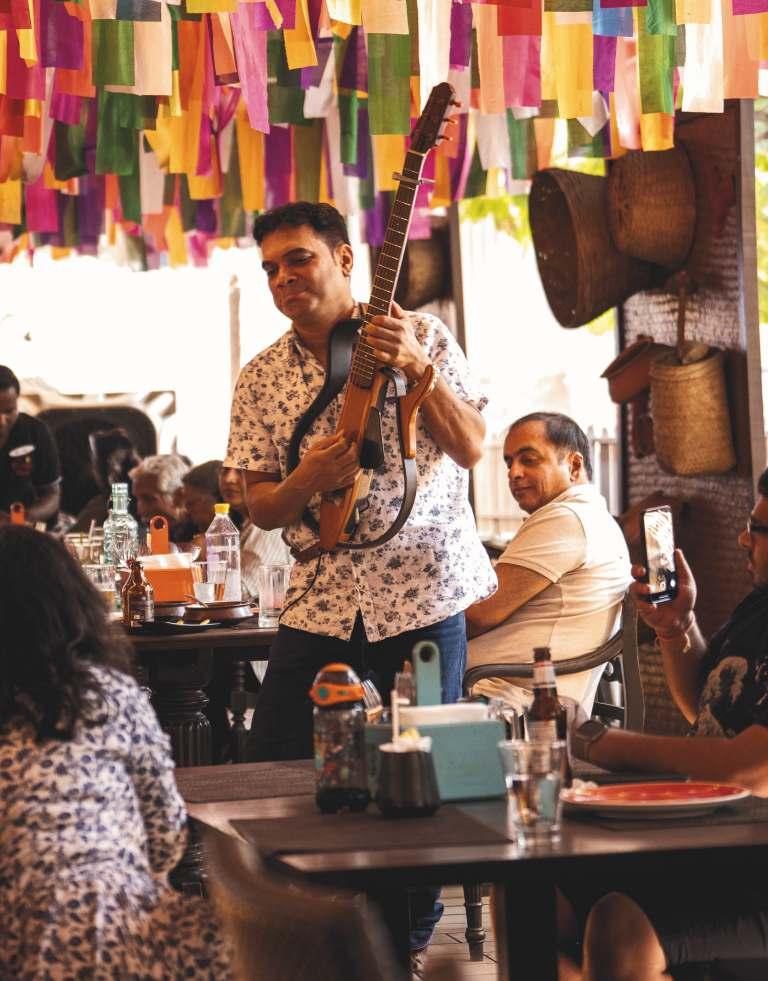







LOSING GROUND
Who’s Really Buying Goa?
By Gauri Ghadge


In a quiet village on the fringes of North Goa, an old balcao overlooks a newly tarred road. Beyond it, a high compound wall rises; modern, sleek, and unmistakably out of place. Behind that wall is one of dozens of luxury villas built in the past year. The owner? Not a local, not even a frequent visitor, just another investor, part of a growing wave of outsiders reshaping Goa’s landscape, one parcel at a time. The question that’s echoing through paddy fields and coastal corridors is no longer who owns Goa? But who is losing it? In the rush of real estate activity flooding the state, a deep unease is surfacing: has Goa become a playground for external profiteers, while locals are priced out of their own land? The land, once known for paddy fields and coconut palms, is being reimagined into premium villas, private retreats, and luxury enclaves. This isn’t merely development—it’s transformation. And at its centre is a quiet but pressing concern: as outsiders pour in, where do Goans fit into this new map?
PARADISE FOR SALE
For generations, land in Goa was more than just a financial asset; it was identity, inheritance, and community. Yet, in the past five years, particularly post-2020, Goa has experienced a staggering rise in land transactions, much of it driven by non-Goans, high-net-worth individuals, shell corporations, and non-resident Indians (NRIs). A closer look reveals that the phenomenon isn’t limited to coastal hotspots; it is unfolding in inland villages, agricultural belts, and heritage zones once considered untouchable. The pandemic served as an unlikely catalyst. With urban India locked indoors, the idea of a slower, greener life took root. Goa, with its
Land became the currency of that dream. According to records from the Department of Registration, Goa saw a sharp spike in property registrations post-2020, with a significant portion attributed to out-of-state buyers. Reports from industry analysts confirm that inquiries from non-Goan investors have nearly doubled, especially for luxury homes, farmland, and heritage estates.
THE INVISIBLE BUYERS
Unlike earlier phases of tourism-driven development, today’s buyers are not always visible Many purchases are made not by individuals but by shell companies, entities
legally registered but often acting as fronts for larger private investments. Others are routed through NRIs or non-local entities using power of attorney or proxy ownership models.
Several recent land transactions under scrutiny have involved layered structures; companies registered in metro cities acquiring land under different names, or temporarily defunct family properties suddenly changing hands In some instances, reports have surfaced of properties being purchased without clear ownership lineage, raising questions about document verification, succession claims, and loopholes in local land laws.
This trend is not illegal, but it does highlight a structural gap While regulations exist to protect certain classes of land and restrict agricultural-to-commercial conversions, the pace and nature of these purchases show that the framework can often be bypassed or interpreted in ways that don’t align with longterm local interests.
CULTURE FOR RENT
One of the more intangible but deeply felt impacts of the real estate influx is the slow erasure of Goan culture and lifestyle. In many heritage villages, long-standing homes have been sold, not because families wanted to part with them, but because the economics left them little choice.
Heritage bungalows are being converted into boutique stays, ancestral lands into private resorts. These are often locked up most of the year or operated by companies based outside the state. The soul of the neighbourhood, its rhythms, its festivals, its language—begins to fade when the homes around are no longer homes, but holdings.


Even inland areas, once immune to speculative interest, are now in demand. Locations like Aldona, Siolim, and Pilerne, formerly quaint villages, have become hotspots, not for residents but for buyers seeking appreciation, not assimilation.
A 2024 community survey in North Goa revealed that over 60% of young Goans seeking to build homes in their native village were unable to do so due to soaring land costs and reduced availability. Many end up renting or migrating further inland, ironically, away from the very villages they grew up in.
A MARKET WITHOUT A MIDDLE
What makes this wave even more unsettling is that it isn’t feeding a balanced market. Developers aren’t building affordable housing for locals; they are building luxury villas for elite clients Analysts report that homes priced above �1 crore are selling faster than mid-tier or entry-level homes.
Luxury real estate in Goa has seen an estimated 25% year-on-year increase in demand. Meanwhile, housing boards and cooperative societies report undersubscription for lower-income housing due to limited supply.
For young Goans, especially those returning after studies or working in tourism, healthcare, or education, the dream of owning a home near family is becoming increasingly unrealistic. A double-income household earning �60,000–�80,000 a month finds itself c o m p e t i n g w i t h m i l l i o n a i r e s a n d multinationals.
FARMLAND AND ECOLOGICAL SHIFTS
The surge in property development is not just
economic; it has ecological repercussions. Paddy fields, laterite plateaus, and hillside forests are increasingly being diverted for construction. The state's unique topography is under pressure, with many new villas and hotels coming up in eco-sensitive areas. Environmentalists have flagged cases of large-scale flattening of hillocks, cutting down of coconut groves, and construction in lowlying floodplains Once converted and concretised, these lands can rarely be restored to their natural form.
Goa’s biodiversity and its role as a natural buffer against climate risks make this trend particularly concerning. Moreover, rapid land conversions have cascading effects on water tables, waste management, and agricultural viability.
LEGAL GREY ZONES
Navigating land ownership in Goa is uniquely complex. The state’s history with Comunidade lands (community-owned land parcels) and the legacy of Portuguese-era records makes documentation difficult, and in some cases, open to interpretation. While frameworks exist to regulate foreign and non-agricultural ownership, enforcement can be inconsistent. Due diligence processes are sometimes sidestepped, especially when urgency and high-value transactions override caution.
Community leaders and village panchayats in some areas have begun raising concerns Some have even called for more transparency in land registry disclosures and a stricter framework for change-of-use approvals However, without a unified digital land record
system and real-time verification, the loopholes are hard to close entirely.
WHAT’S AT STAKE?
The real cost of this land rush is not only economic or environmental, it is generational. Every time a Goan family sells its ancestral home, a piece of heritage exits the cultural bloodstream of the state. Every time a traditional village turns into a weekend retreat, a fragment of continuity is lost.
For a state with limited land resources, no mountain range or desert expanse to expand into, this influx is not easily absorbable. And with no fixed residency requirement for buyers, there is little incentive for integration into the local fabric.
The future risks a Goan landscape filled with villas and resorts, but empty of Goans.
BUILDING A BALANCED TOMORROW
This is not a story of outsiders versus insiders. Goa has always been a welcoming land, enriched by exchange and migration. The current situation is not about blaming buyers from outside the state or abroad, but about ensuring the development that happens here is inclusive, transparent, and sustainable.
Buyers, investors, and developers who love Goa must see themselves not just as owners of property, but as stewards of a unique cultural and ecological heritage. Policy thinkers have proposed solutions worth considering: land banks to preserve parcels for locals, incentives for affordable housing developers, transparent buyer registries, and digital land record systems that prevent duplicity As discussions around planning, zoning, and housing continue, the hope is that Goa will find a way to grow without losing the very essence that makes it so desirable in the first place.
Above all, what’s needed is a broader awareness of the issue, not through panic or blame, but through participation. Empowering village communities to preserve their land, heritage, and ecosystems is essential.
WHOSE LAND IS IT, ANYWAY?
In the late evening haze over Chapora or the rising mist above Chandor, Goa’s charm is timeless. But its land is not. It is finite, fragile, and deeply rooted in community memory. The unfolding story of land in Goa is not merely about ownership; it is about identity.
As the state stands at this crucial juncture, the question is not about whether real estate growth should happen, but how, where, and for whom.
Because when the last balcao is sold, and the last laterite stone replaced by marble, what remains may not feel like Goa at all.




ASHRAYAADHARSCHEME
Empowering Goa’s Tribal Homes, One Brick at a Time
By Gauri Ghadge


In the dazzling mosaic that is Goa, where the sea sings its lullaby to palm-fringed shores and heritage structures whisper tales of time, there exist quieter, often overlooked corners. These are the homes of Goa’s Scheduled Tribe (ST) communities, many of which stand worn and weary, in dire need of structural support Recognising this silent yet pressing need, the Government of Goa launched the Ashraya Adhar Scheme, a transformative initiative that
offers not just financial assistance but the promise of dignity, security, and upliftment for tribal families.
A SHELTER WITH PURPOSE
Introduced by the Goa State Scheduled Tribes Finance and Development Corporation Limited, under the Department of Tribal Welfare, the Ashraya Adhar Scheme is specifically designed to provide low-interest
financial assistance to ST individuals for the repair, renovation, or reconstruction of their homes. This includes mundcarial homes and jointly owned residences, with provisions that ensure no tribal household is left behind due to procedural or financial constraints.
At the heart of this scheme is a fundamental belief: every Goan deserves a safe, resilient home, a space that shelters both their memories and their aspirations.
FINANCIAL RELIEF, STRUCTURALLY SOUND
The scheme offers financial assistance of up to �5,00,000, issued in the form of a loan at an exceptionally low interest rate of 2% per annum This makes the scheme far more accessible than traditional bank loans, which often come with prohibitive rates and rigid eligibility conditions.
The disbursement is strategically broken into two instalments:
F 3,75,000 is released immediately after loan approval.
F 1,25,000 is issued upon full utilisation of the first instalment, subject to submission of utilisation bills and physical inspection by the Corporation.
To ensure timely implementation, the loanee must begin the work within three months of receiving the first instalment.
MANDATORY INSURANCE FOR SECURITY


Going a step further, the scheme mandates that the loanee must be covered under both life and property insurance, with premiums to be borne by the beneficiary unless the Corporation decides otherwise. This provision offers a critical safety net, protecting both the structure and its inhabitants against unforeseen adversities.
INCLUSIVE ELIGIBILITY
F The eligibility conditions are inclusive yet responsibly defined:
F The applicant must belong to a Scheduled Tribe as notified by the Government of Goa.
F They must own a residential house, either individually or jointly In cases where multiple family units live separately within a jointly owned home, each unit is eligible independently.
F The applicant’s age must not exceed 55 y e a r s F o r e m p l o y e e s o f t h e State/Central Government, Government C o r p o r a t i o n s , B o a r d s , o r a i d e d institutions, the limit is relaxed to 58 years.
An additional key feature: if the applicant is a government employee, no surety is required. For others, two sureties are mandatory, with valid identification, income proof, and notarised affidavits on �100 stamp paper as per the latest Gazette notification (2023).
A CLEAR AND ACCESSIBLE APPLICATION PROCESS
Applications for the Ashraya Adhar Scheme must be submitted offline. Here’s how:
F Visit the Corporation Office: Head to the Goa State Scheduled Tribes Finance and Development Corporation, 2nd Floor, Smruti Building, Swami Vivekanand Road, Altinho, Panaji.
F Collect the Form: Request the scheme’s prescribed application form from the concerned officer.
F Complete the Form: Fill all mandatory fields, affix a passport-sized photograph, and attach the required documents. These include:
¤ ST Certificate (self-attested)
¤ Age proof (Birth certificate, School leaving certificate, or Driving licence)
¤ House tax receipt
¤ NOC from co-owner (if applicable)
¤ Income proof or ITRs
¤ Photos of the house to be renovated
¤ Bank mandate form
¤ Aadhaar copy and two passport-sized photographs
F Submit & Get Acknowledged: Submit the filled form with documents. Ensure you collect a submission receipt.
F
verification, the application is appraised by the sanctioning authority comprising the Chairman and two Directors of the Corporation.
The District Social Welfare Officer (DSWO) can be contacted to check the status of the application.
REPAYMENT TERMS: FLEXIBLE AND FAIR
The repayment structure is designed to be fair and manageable:
F A three-month moratorium period is granted after disbursement.
F Thereafter, monthly instalments over 10 years (120 EMIs) commence.
F In case of older applicants (above 50), repayment must be completed by age 60.
F For government employees, the schedule can extend till retirement plus six months.
Penal interest of 2% is levied only on overdue amounts. If a beneficiary wishes to apply for another loan from a different institution during this period, they must produce a no-dues certificate from the Corporation. In case of default, recovery proceedings will be initiated under the Goa, Daman & Diu Land Revenue Code.
GOVERNANCE AND ACCOUNTABILITY
The scheme is governed by the Goa State Scheduled Tribes Finance and Development Corporation Limited, under the leadership of its Board of Directors The Chairman, Managing Director, and Director of Tribal Welfare oversee implementation, inspection, and grievance redressal.
The scheme was initially rolled out as a fiveyear initiative, with the flexibility to amend rules and guidelines as per the evolving needs of the tribal population in Goa.


REAL IMPACT, LASTING CHANGE
While official statistics on year-wise disbursements have not been made publicly available, anecdotal evidence and ground reports point to the scheme’s growing impact across the state. The demand for applications has steadily risen, particularly in the talukas of Canacona, Quepem, Sanguem, and Sattari, regions where ST households form a significant percentage of the population. Beyond structural repairs, the Ashraya Adhar Scheme is restoring self-worth and peace of
mind. It transforms cracked walls into safe spaces, leaky roofs into warm shelters, and unstable foundations into secure futures.
THE STATE'S ENDORSEMENT
The Chief Minister of Goa has publicly supported the Ashraya Adhar Scheme, participating in awareness programmes and urging tribal families to make the most of this transformative opportunity. This high-level endorsement reinforces the government’s commitment to inclusive development and
equitable housing access for all.
FROM SHELTER TO STRENGTH
The significance of a sturdy home cannot be overstated. For a tribal family in Goa, it means protection from monsoon storms, a dignified space to raise children, and a concrete foundation upon which to build a better tomorrow. The Ashraya Adhar Scheme, in this light, is not just a loan; it is a tool of empowerment, equity, and enduring change. As Goa continues to stride forward in the name of progress, initiatives like this remind us that true development begins at home, quite literally. With every roof it rebuilds and every family it uplifts, the Ashraya Adhar Scheme strengthens not just structures, but the very soul of Goa’s tribal communities.
FOLLOW US ON

IS GOA STILL AFFORDABLE?
A Ground Reality Check for Locals and Tourists
By Gauri Ghadge

There was a time when Goa epitomised the art of slow living. Susegad wasn’t just a word, it was a lifestyle, one that reflected a place where the coconut palms danced in the breeze, neighbours shared sorpotel over fences, and tourists found an easy, affordable escape from the rush of mainland cities But today, as Goa transitions from quaint to cosmopolitan, the question is no longer rhetorical Is Goa still affordable? And if so, for whom? G o a ’ s m a g n e t i c p u l l h a s intensified over the last decade. It now draws not only tourists but also investors, influencers, retirees, and remote workers looking to build their lives or portfolios against the backdrop of tropical charm This influx has inevitably transformed the state’s economics. Rising real estate prices, evolving hospitality trends, and record-breaking tourist numbers have created a clear divide between perception and reality.
R E A L E S TAT E : B E T W E E N STABILITY AND SATURATION
Contrary to the assumption that property prices in Goa are skyrocketing uncontrollably, the first half of 2025 has revealed a more nuanced story. According to Savills India, as reported in Hindustan Times and Times of India, villa prices in North Goa have largely remained flat during this period. The reason? A glut of luxury inventory has outpaced actual buyer absorption. For investors, this oversupply signals negotiation power For locals, it offers a rare moment of
breathing room in an otherwise overheated market But even with the plateau, affordability is relative. In hotspots like Assagao, Anjuna, and Siolim, entry-level villa prices still range in crores, well beyond the reach of middle-class Goans Long-term rentals, too, are affected, with many landlords preferring lucrative short-term vacation listings over stable tenants.
In South Goa, where the tourism footprint is lighter and development more measured, affordability remains better, but only marginally so As the North continues to saturate, developers and tourists are turning their gaze southward, gradually eroding the cost advantage.
COST OF LIVING: A TALE OF TWO WALLETS
For local residents, the cost of living in Goa, while rising, is still manageable. A single adult can expect to spend anywhere between �20,000 and �30,000 per month, including rent, utilities, groceries, and transport Families, depending on their size and lifestyle, usually budget 40,000 to 60,000 monthly This relative stability is thanks to access to local markets, subsidised public transport, and inherited or long-standing housing arrangements.
Tourists, however, navigate a different terrain. Platforms like Nomads.com and Numbeo peg a budget-conscious solo traveller’s expenses at �60,000 to �80,000 per month. For those opting for boutique hotels, daily dining, and private transport, the figure can easily cross �1.2 lakh. Short-term rentals, especially via Airbnb, average �4,000–�6,000 per night in North Goa, pushing total accommodation costs sky-high during the peak season.
The result is a growing affordability chasm between locals living with legacy support systems and visitors entering an inflated microeconomy built on seasonality and demand.
EATING, MOVING, AND LIVING: WHAT THE NUMBERS SAY
Food is one area where Goa retains its accessible charm, if you know where to look. A traditional Goan thali still costs around �150–�200 at a local eatery. Monthly grocery bills for locals hover between 3,000 and 5,000, depending on dietary habits and shopping sources. But for tourists accustomed to dining out, the costs climb quickly. A dinner for two at a beachside restaurant can easily exceed �2,000, while a single cappuccino in a trendy café costs �200 or more.
Transport costs diverge similarly Local commuters typically spend �2,000–�3,000 per month using buses or personal scooters. For tourists, options are limited and expensive. Goa lacks app-based taxi services like Uber or
Ola due to regulatory restrictions. This means visitors must rely on private taxis, which charge �600 to �1,500 for short rides. Scooter rentals remain the most economical option, priced between �300 and �500 per day, plus fuel.
One of the more symbolic shifts in this space is the recent fare structure introduced on the new Ro-Ro ferry route between Ribandar and Chorao As per official notifications and coverage in Herald Goa and Daijiworld, Goan residents and two-wheeler owners are allowed to travel for free, while tourists must pay �50 (on foot), �100 (with rental bikes), or �300 (with rental cars). This policy underscores the widening economic distinction between residents and visitors, and the government’s effort to protect local affordability.
Tourism Pressure and the Cost of Popularity
Goa has always been popular, but the first half of 2025 saw an unprecedented influx: 54.55 lakh tourists, including 51.84 lakh domestic and 2.71 lakh international visitors, as confirmed by the Goa Tourism Department and widely reported in Economic Times and Business Today. This volume puts significant pressure on the state’s infrastructure, particularly roads, waste management, and water supply, leading to both visible and invisible costs for residents.
Accommodation prices rise steeply during the tourist season, especially between November and February. While Goa remains “affordable” compared to foreign destinations, it is no longer the budget-friendly haven it once was. With premium beach villas renting for upwards of �15,000 per night, the luxury travel segment continues to balloon, drawing high-end footfall but inflating the cost curve for everyone else.
At the same time, infrastructure development is trying to keep pace. The addition of the Mopa International Airport, which handled approximately 4.6 million passengers in FY 2024–25, has improved connectivity and eased pressure on Dabolim, which served over 7 million travellers last year. New bridges like the Atal Setu have reduced commute times, but traffic congestion in coastal zones persists during peak periods.
THE DIVIDE WIDENS
All of this contributes to what can only be described as a dual economy. Locals, who depend on modest incomes, subsidised services, and community networks, are increasingly squeezed by an economy tailored to short-term, high-spending visitors Meanwhile, tourists, especially those with international or metro city purchasing power, find Goa affordable compared to their own cities, without realising the inflationary impact of their presence.
The shift isn’t inherently negative Tourism remains Goa’s lifeblood, and its growth has spurred entrepreneurship, cultural revival, and infrastructure expansion. But the challenge lies in balance. Without proactive policies, the risk is that Goa becomes a luxury bubble, accessible only to the affluent, while those who make the state vibrant are priced out of their own home.
FINAL THOUGHTS: STILL AFFORDABLE, BUT ONLY IF YOU KNOW HOW
So, is Goa still affordable? The answer depends entirely on who you are and how you live.
For locals, the answer is a cautious yes, but only outside the tourism belt and with careful budgeting For tourists, Goa can still be experienced affordably, but not impulsively, not during peak season, and not without intention. The era of cheap beach shacks and �100 rooms may be over, but the essence of Goa remains accessible for those willing to explore its less commercial corners.
Affordability today is no longer guaranteed. It’s earned through awareness, timing, and a conscious choice to engage with Goa beyond the curated Instagram frame. As the state strides forward, what it needs most is thoughtful development, inclusive policies, and a shared commitment to keeping Goa’s soul not just intact, but accessible to all.
FOLLOW US ON


TUNING INWARDS
Medhaj Dempo’s
Musical Quest for Harmony, Healing & Atman
By Gauri Ghadge

In a world overwhelmed by noise, where success often equates to speed, and art sometimes loses itself in algorithms, Medhaj Dempo dares to move differently. A native of Panaji and a proud Goan, this young music composer, poet, and cultural storyteller is redefining what it means to create from the soul, and for the soul.
Rooted in Indian classical music and driven by a quiet yet powerful vision of world peace, Medhaj is not just composing tracks, he’s composing meaning From receiving accolades from Goa’s Chief Minister to working with global artists and launching his experimental genre, tman, Medhaj’s journey is a symphony of simplicity, sensitivity, and spirituality.
A CHILDHOOD IN RHYTHM
Born in the culturally rich city of P a n a j i , M e d h a j ’ s e a r l i e s t memories aren’t of toys or cartoons, they’re of shlokas, subhashitas, and his father performing daily pooja at the devagruha. “Growing up in Goa felt like living in a poem, ” he reflects. “The coconut trees, the soft morning hues, the stillness… it’s shaped my inner landscape.” From the beginning, he was immersed in a household that valued tradition, education, and introspection Attending three different schools, Hedgewar School, Sunshine Worldwide, and Mushtifund High School he absorbed varied influences. Yet, it wasn’t academics that sparked
his fire, but the theatre of life: playing cricket and basketball, coding, writing, singing in concerts, organising events, and leading student bodies. By the time he entered Goa College of Music, he had already laid the groundwork for something much larger than just a music career.
And indeed, his work during college didn’t go unnoticed He was elected unopposed as General Secretary for the term 2024–2025, initiated new inter-college cultural events like Prastaar 2025, and was eventually awarded the title of “Best Outstanding Student,” graduating with distinction and emerging among the rank holders.
THE BEAT OF A CALLING
His musical awakening began as early as age 3, quietly sitting beside his father’s singing lessons. But it was only in second standard that he formally began learning Tabla from Shri Shripad Chari. By the time he was in Class 8, he stood at a forked road: information technology or music? “I remember being intimidated by all the equipment,” he says with a laugh, “and thinking, how will I ever understand this?” But he did. Not only did he understand it, he made it his mission. “Music, for me, was never just about melody. It was my medium to serve a larger purpose world peace.”
His first composition, written and sung for his cousin’s 10th birthday at age 13, was followed by a professional debut at 16, when he produced the soundtrack for the government’s short film ‘Swach Suruwaat.’ It was just the beginning. His original single ‘Yaare Dost’ soon followed, as did jingles for London Radio in the UK, compositions for the Directorate of Higher Education, and collaborations with globally respected artists like Dr. Sudhanshu Kulkarni and Pt. Ravi Chary.
In 2023, he was chosen as a resident artist for the Serendipity Foundation, a prestigious international platform. The following year, he was invited as a special guest speaker at Cine Talkies 2024, hosted by Sanskar Bharti in Mumbai. Somewhere along the way, Goa’s Hon’ble Chief Minister felicitated him for his contributions to music and education.
Yet despite these milestones, Medhaj remains incredibly grounded. “My journey is not about achievements, but alignment,” he says. “To stay true to the silence within.”
ATMAN: A SOUND THAT BREATHES
The most ambitious expression of his ethos is �tman, a music collective and genre he has nurtured over the past three years. Rooted in Indian classical and infused with meditative, experimental soundscapes, �tman is not just a band; it's a philosophy.
“Atman is a mirror,” he explains. “It reflects the self, the society, and the stories we ’ ve forgotten. It’s meditative, but also dynamic.
Traditional, but fearlessly modern. I want it to become a bridge between Goan culture and global consciousness.”
Through �tman, he collaborates with Goan folk artists, spiritual storytellers, and modern musicians to preserve the roots while expanding the canopy. Conversations with researchers like Sagar Mule on Goa’s ancient Kaavi art, and musical experiments that blend folklore with ambient rhythms, are shaping a new kind of cultural vocabulary.
FROM
SOL KADI TO SILENCE
For Medhaj, Goa isn’t just a home, it’s a heartbeat “With Sol Kadi, Rice, and Batatachyo Fodi, I feel rooted,” he smiles. His mornings often begin with the sounds of vendors calling out “Nustey zaay?” and his nights end with the comfort of Bhaaji-Pav and homemade rice meals.
Professionally too, Goa has served him well. The vibrant festival culture, IFFI, Serendipity, and others have offered him rich platforms to perform, network, and share his voice. But he believes Goa’s evolution is at a critical juncture.
“We are in a transition,” he observes. “There’s a hunger among Goan youth for more soulful, mindful culture. And I see creators rising. I see folk art being rediscovered. Goa’s silence is finally making noise.”
His favourite part of Goan society? The unhurried rhythm. “Susegad is a spiritual term,” he insists. “It’s about living in a room where silence makes noise.”
OF FAILURES, FAITH & PHILOSOPHY
Ask him about struggles, and he doesn’t flinch. “Finding my sound was the biggest challenge,” he says. Not just musically, but in life. He speaks of the difficulty in finding an audience for slow, healing music in a fast-paced, dopaminedriven world. “Sometimes people don’t believe that music can heal, they think it only entertains.”
BUT HEALING IS THE WHOLE POINT.
He recalls the moment he played his music for a friend battling depression. “All they said was, ‘Thank you.’ That was the moment I knew, this is it. This is why I do what I do.”
His key learnings? “Authenticity lasts. Silence is sacred. And softness is not weakness, it’s a superpower.”
Criticism and failure, he says, are his best teachers. “They keep me honest.”
BEYOND THE NOTES
When not creating music, Medhaj immerses himself in long walks, barefoot in nature, deep philosophical discussions, cooking new recipes, watching classic films, and most importantly introspection. “I tweak my habits more than I tweak my compositions,” he jokes. He’s passionate about poetry, Indian philosophy, Vedic astrology, photography, and
reading ancient texts. His vision is not just to compose tracks but to curate spaces for emotional expression, especially in mental health. “I believe music and silence are the most powerful healers we’ve been given. I actively support causes related to emotional well-being through art.”
His biggest inspiration? “Tushar Kamat, my mentor and best friend My parents Dr Sudhanshu Kulkarni Gulzar Swami Vivekananda. Sant Tukaram. And nature, it’s the best Guru.”
FUTURE, FAITH & FINAL NOTES
In the coming months, Medhaj plans to unveil a series of major musical projects he’s been working on quietly for years. He teases collaborations, new �tman compositions, and genre-bending releases that could redefine how spiritual music is experienced in the mainstream.
Where does he see himself in five years? “Rooted in Goa, but resonating across the globe. I see �tman becoming a living genre connecting cultures, healing hearts.”
As for his legacy, he keeps it simple: “Tune inwards the world will groove.”
When asked what advice he’d give to young creators, his answer is immediate and powerful: “‘Know Thyself’ before knowing anything else. Don’t chase attention. The world doesn’t need more noise; it needs truth, love, and faith.”
AND FOR GOA? HIS MESSAGE IS BOTH POETIC AND PROFOUND:
“Don’t forget the roots while chasing the skies. Goa is not just a place, it’s an incredible vibration. Protect it, sing with it, grow through it. Jai Gomantak, Jai Bharat.”

A SYMPHONY BY THE SAL DINING AT THE FISHERMAN’S WHARF, CAVELOSSIM
By Gauri Ghadge

Along the tranquil curve of the River Sal in Cavelossim lies The Fisherman’s Wharf, a restaurant that has transcended its status as a dining destination to become a cultural landmark. More than just a table with a view, this iconic riverside spot is a living expression of Goa’s culinary soul; vibrant, welcoming, and rooted in authenticity.
ATMOSPHERE: RIVERSIDE ELEGANCE WITH A GOAN HEARTBEAT
The moment you step into The Fisherman’s Wharf, you are embraced by the rhythmic pulse of Goa. Al fresco tables spill out toward the shimmering water, shaded by swaying palms and kissed by coastal breeze. Inside, rustic textures blend with nautical charm, while live music adds a festive, familiar lilt to the setting. Whether it’s a romantic sunset meal or a lively family gathering, the space strikes the perfect chord between serenity and celebration.
THE FOOD: FAMILIAR FLAVOURS, ELEVATED WITH FINESSE
The culinary narrative here is firmly Goan, yet confidently global. We began with Spiced Panko Prawns, where perfectly golden crust met delicately sweet, a study in contrast and precision. The Calamari Batter Fry, crisp and melt-in-the-mouth, paired beautifully with a zingy tartar dip.
The Classic Chicken Tikka arrived straight from the tandoor, its smoky edges and succulent core paying homage to tradition done right. But the true stars of the spread were the Rawa Fried Chonak and Kingfish Racheado; both pan-fried to a perfect crunch, yet moist within.
The racheado masala, bold, tangy, and unapologetically Goan, was a fiery revelation. Of course, no Goan meal is complete without Fish Curry Rice, and here, it’s soulful and deeply satisfying — rich with coconut milk, sharpened with kokum, and ladled with love. Assorted breads and Goan poi arrived fresh, warm, and generous, each bite inviting a deeper dive into the curries’ layered complexity.
DESSERTS: TRADITION WITH A TWIST
The finale was nothing short of a celebration. The Dark Chocolate & Peanut Tart delivered richness without excess, its silky ganache and nutty crunch balanced to perfection The
Chef’s Special Tiramisu offered a light, creamy reprieve, while the warm, delicately layered Bebinca, served with vanilla ice cream, brought the meal full circle; nostalgic, elegant, and distinctly Goan.
BEVERAGES: GOA IN A GLASS
The bar at The Fisherman’s Wharf is no afterthought. Signature cocktails like the Sol de Goa, a refreshing blend of feni, lime, mint, and spice, evoke the region’s spirit in every sip. A well-rounded wine list and artisanal mocktails ensure every palate finds its perfect pairing.
SERVICE: HOSPITALITY THAT FEELS LIKE HOME
The service at The Fisherman’s Wharf mirrors its cuisine: intuitive, attentive, and deeply personal. Staff members are well-versed in the menu and quick with thoughtful suggestions, yet their approach remains refreshingly relaxed. Even at full capacity, service flows with grace, never missing a beat.
The Verdict: A Culinary Institution That Endures In an ever-evolving dining landscape, The Fisherman’s Wharf remains resolutely timeless, not because it resists change, but because it embraces the essence of what truly matters: authenticity, warmth, and soul. Every plate tells a story, every table by the river invites a moment of connection, and every visit feels like coming home.
THIS IS NOT JUST A PLACE TO EAT.
It’s where Goa lingers; on your tongue, in your heart, and in the memories you carry long after the meal is over.

SUNDAYS DONE RIGHT THE LAZY BRUNCH AT TAJ CIDADE DE GOA
By Gauri Ghadge
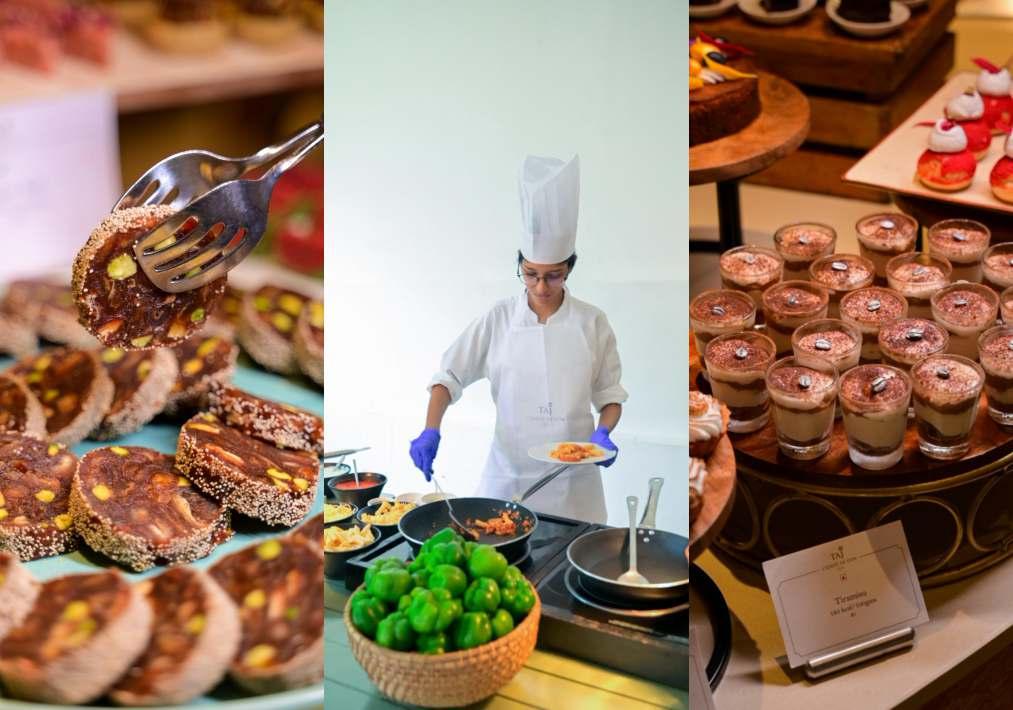
There’s a special kind of magic in a slow, sundrenched Sunday by the sea — and no place captures it quite like Taj Cidade de Goa. With its signature Lazy Sunday Brunch, this iconic resort transforms your weekend into a relaxed celebration of family, food, and fun, set against the backdrop of sweeping ocean views and gentle Goan breezes.
More than just a buffet, this brunch is a wellcurated experience that blends gourmet indulgence with playful charm. Held in the resort’s open-air alfresco space (weather permitting), the atmosphere is that of a garden party by the beach — where kids, adults, and even pets find their happy place.
FOR THE YOUNG & YOUNG AT HEART
Children are the heart of the Lazy Sunday concept. From face painting and bubble art to storytelling corners and mini treasure hunts, the little ones are kept joyfully engaged in supervised zones while parents sit back and relax. Expect giant Jenga, board games, and even a mini-golf setup — ideal for family bonding or friendly competition. Meanwhile, grown-ups can explore recreational games, sip on cocktails, or sway to live acoustic tunes under swaying palms.
THE FOOD: A FEAST FOR EVERY CRAVING
At the heart of it all lies the extensive food spread. Think sizzling grills, wood-fired
flatbreads, wok-tossed noodles, sushi counters, and tapas with a desi twist — all made live, fresh, and interactive. Indian street food meets global flavours here, plated with flair and flavour. And the dessert section? It’s
nothing short of a showstopper — featuring handcrafted gelatos, Goan sweets, flaming flambé stations, and cascading chocolate fountains There's something delightful at every corner.
SIP, SHOP, AND SOOTHE THE SOUL Brunch-goers can choose from beverage packages that include bubbly cocktails, mocktails, and local craft brews. A dedicated mimosa and sangria bar adds to the spirited vibe. To top it off, a boutique flea market showcases homegrown brands and artisanal finds — perfect for those who like to shop while they sip.
What truly sets the Lazy Sunday Brunch apart is its inclusivity and attention to detail Pet parents will find water stations and special treats for their furry companions, while others can simply unwind in hammocks, soak up the sun by the pool, or groove to live music floating through the coastal air.
Whether you ' re a Goan local or a visitor seeking a taste of susegad living, Lazy Sundays at Taj Cidade de Goa offer the perfect blend of indulgence and nostalgia. It’s a day to slow down, connect, and create memories — one bite, laugh, and song at a time.
Reservations: +91 832 665 9226
Follow the vibe: @tajcidadedegoa

MONSOON MOODBOARD ON A PLATE THE PARK CALANGUTE GOA
By Gauri Ghadge

As the first rains sweep across Goa, washing the coast in moody greys and lush greens, The Park Calangute Goa responds not with umbrellas, but with flavour This monsoon,
LOVE, The Restaurant, the property’s seafacing culinary haven, unveils an exceptional seasonal menu crafted by Executive Chef Lokendra Oli, turning rain-soaked afternoons into unforgettable dining memories. This is not comfort food as you know it. This is comfort food reimagined, elevated, and plated with finesse.
RAIN, ROMANCE, AND REINVENTION
Dining at The Park during the monsoon is a fullsensory experience. From the glass-fronted restaurant, the sea rolls in just beyond reach, mirroring the drama of the show kitchen where Chef Lokendra and his team create edible poetry. Known for his mastery of global techniques and deep love for local produce, Chef Lokendra’s Monsoon Menu walks a tightrope between indulgent nostalgia and inventive boldness.
We began with Warm Dumpling Soup and a Tomato Basil Soup, each spoonful a reminder of childhood, yet presented with precision and restraint. The dumpling broth was clear yet rich, letting the handmade parcels shine. The basil-tomato, meanwhile, was earthy and comforting, with just enough acidity to cut through the monsoon air.
Then arrived the Tender Coconut Salad, a study in freshness. Cool, silky slivers of coconut were tossed with crisp greens and just a whisper of dressing, letting the ingredients speak. Next, a Chicken Tikka Salad, smoky and
substantial, reminding us that even “healthy” could taste like celebration.
FLAVOUR THAT DANCES WITH THE RAIN
What followed was a crescendo of indulgence: Tulsi Mahi Tikka, delicately charred, herbaceous and moist, arrived a l o n g s i d e A n g a r a C h i c k e n T i k k a , unapologetically bold and beautifully blistered at the edges. Both danced between spice and smoke, perfectly suited for the weather outside.
The Mezze Platter brought a Mediterranean interlude, pillowy hummus, airy falafel, warm pita, all executed with elegance. But it was the Chicken Tikka Pizza that stole the table’s attention: hand-stretched, wood-fired, and
topped with juicy chicken bites that retained their char, it was fusion done right, without gimmicks.
We sopped up gravies with buttery Laccha Paratha and Garlic Naan, then surrendered to the richness of Chicken Biryani and Mutton Biryani, each aromatic, deeply layered, and cooked with the kind of care you associate with Sunday family meals.
SWEET ENDINGS WITH SOUL
The rain outside may have whispered, but dessert screamed joy. The Sizzling Brownie arrived hot, theatrical, and unapologetically nostalgic. The Crème Brûlée, in contrast, was subtle; a wobbly custard topped with the perfect caramel crack. The Tender Coconut Panna Cotta offered tropical lightness, and the Tiramisu was generous, creamy, and brimming with espresso warmth.
Each dessert hit a different emotional note: comfort, elegance, surprise; and together, they summed up what the Monsoon Menu truly is: a curated emotional experience.
BEYOND DINING: A SEASONAL STORY
“This isn’t just a menu, it’s a feeling,” says General Manager Saurabh Khanna. “The rains awaken something in us all, and through this menu, we wanted to awaken palates, memories, and moods.”
Indeed, Chef Lokendra Oli’s monsoon curation isn’t simply food, it’s Goa in a season, plated. His thoughtful layering of flavours, the sensory interplay of textures, and the cultural homage to both global influences and Goan soul all create a narrative that unfolds with every bite.


MUD, LIME & LOVE
Choosing Natural Building Materials Over Concrete
By Gauri Ghadge

A quiet revolution is stirring beneath the steel and concrete that have long defined the built environment. It doesn’t glitter with glass or boast skyscraping ambition. Instead, it speaks in the language of texture, breathability, and memory, of clay, lime, and timeworn wisdom. Across Goa and around the world, designers and dwellers alike are reawakening to a powerful truth: that the future of architecture may lie in the oldest materials known to humankind.
At the heart of this movement is a shift not merely in construction practices, but in consciousness. A realisation that building with natural materials is not a retreat into the past,
but a reclamation of sustainability, resilience, and soul.
THE CONCRETE CONUNDRUM
Concrete is everywhere. It's the backbone of bridges, towers, roads, and cities But its environmental impact is staggering. Cement, the active binder in concrete, is responsible for roughly 7–8% of global carbon dioxide emissions. This comes primarily from the p r o c e s s o f c a l c i n i n g l i m e s t o n e a t temperatures approaching 1,450°C, releasing nearly a tonne of CO2 per tonne of cement produced. In tropical climates like Goa, concrete’s drawbacks are even more acute. It absorbs
and traps heat, leading to increased reliance on energy-intensive air-conditioning It is impermeable, contributing to flash flooding by preventing natural water absorption into the soil Unlike natural materials, it cannot biodegrade; it ends its life as rubble, often adding to landfill or demolition waste. In a time of climate urgency, continuing to rely on concrete as our default building material is no longer tenable.
MUD: EARTH AS SHELTER
For thousands of years, humans have lived in homes made of the very soil beneath their feet. Far from being a relic of the past, mud construction is a marvel of bioclimatic

intelligence. Techniques like adobe, cob, rammed earth, and compressed stabilised earth blocks (CSEBs) are being rediscovered for their performance, aesthetics, and sustainability.
In Goa, these techniques are not only appropriate—they’re ideal. Mud walls offer excellent thermal mass, helping regulate indoor temperatures by absorbing heat during the day and releasing it at night. Studies show that such structures can lower indoor temperatures by 4–6°C compared to concrete equivalents in hot, humid regions. Moreover, mud is locally available, biodegradable, and easily repairable. When maintained correctly, earthen homes can last over a century, evident in the enduring mud structures found in parts of Karnataka, Rajasthan, and even in heritage villages in Goa.
Building with mud is not just sustainable, it is a tactile, sensory, and cultural experience. It fosters community participation and reconnects people to their land and environment.
LIME: THE BREATHABLE BINDER
Before the industrial dominance of Portland cement, lime was the cornerstone of construction Whether used in mortars, plasters, or finishes, lime offers a host of ecological and structural advantages. Unlike cement, lime sets by carbonation, a process through which it absorbs CO2 from the atmosphere Non-hydraulic lime can reabsorb up to 90–100% of the carbon released during its production, while hydraulic lime typically reabsorbs 23–33%, depending on environmental conditions.
Lime is also:
Breathable, allowing moisture to escape, thereby preventing mold and dampness.
Flexible, accommodating minor building shifts
and reducing cracking.
Naturally antimicrobial, due to its high pH. For coastal states like Goa, these properties are especially valuable, helping structures withstand both humidity and time. Importantly, lime also bonds beautifully with earth-based materials, forming a regenerative duo that evolves with the environment instead of resisting it.
HEMPCRETE AND HYBRID INNOVATIONS
The new era of green building doesn’t just preserve old techniques, it innovates on them. Hempcrete, a bio-composite of hemp hurds and lime, is one such revelation. Lightweight, breathable, and fire-resistant, hempcrete acts as carbon-negative insulation.
Studies indicate that hempcrete can sequester between 110 to 307 kg of CO2 per cubic metre, depending on the binder type and curing process. While not structural on its own, it is ideal for non-load-bearing walls, insulation panels, and flooring. Its use is growing across Europe, the US, and now, slowly, in India.
Other notable developments include:
Alker: A Turkish material combining earth, lime, and gypsum It’s fast-setting, waterresistant, and boasts compressive strengths of up to 15 Mpa.
Lime Mud: A byproduct of paper and pulp industries, lime mud is being reengineered into high-performance concrete binders, achieving strengths of up to 150 MPa while reducing industrial waste.
These innovations demonstrate how tradition and technology can coexist, leading us toward a regenerative future.
THE PHILOSOPHY OF NATURAL BUILDING
To build with mud, lime, and plant-based materials is to embrace a radically different philosophy. One that prioritises harmony over domination, biophilia over sterility, and
community over commodification. Natural buildings breathe. They respond to weather, age gracefully, and foster a sense of well-being. They are non-toxic, acoustically comforting, and emotionally grounding. For the builder, the process is intimate and slow; materials are mixed by hand, shaped with care, and assembled with a respect for nature's cycles.
This is construction as ritual, as art, as stewardship.
Goa’s Moment to Lead
Goa is uniquely positioned to become a beacon for natural building in India. It has: A humid climate that demands breathable materials.
Access to laterite, clay, hemp, and lime.
A growing market for eco-conscious tourism, wellness retreats, and heritage restorations.
A population rich in craft and community knowledge, especially in rural and coastal areas.
However, for this potential to be realised, Goa needs:
Policy support to recognise and incentivise natural materials.
Building code reforms that allow for hybrid materials like hempcrete and CSEBs.
Model projects in public infrastructure, schools, clinics, and community halls that showcase viability.
Training and upskilling programs for local masons and architects.
With the right ecosystem, Goa could lead a national movement toward low-carbon, culturally rooted architecture.
WHAT
WE BUILD, BUILDS US
Architecture is not just about structures; it’s about stories. The materials we choose are declarations of intent. Will we continue to build in ways that disconnect us from nature? Or will we return to the wisdom of materials that heal, breathe, and belong?
Mud, lime, and love are not compromises. They are catalysts for change. They remind us that building can be an act of regeneration, not just of land and resources, but of culture, climate, and community.
Let Goa be the place where we build not just with skill, but with conscience.
SUSTAINABLE GOA
5 WAYS SUSTAINABLE
MANUFACTURING CAN REDUCE CARBON FOOTPRINT AND WHY IT MATTERS MORE THAN EVER

The world is waking up. Climate concerns aren’t just headlines anymore — they’re part of boardroom conversations, dinner table discussions, and the everyday choices we make For manufacturers, the message is clear: it’s time to change how we do things. It’s not just about building well — it’s about building wisely Sustainable manufacturing isn’t a buzzword. It’s a new way of thinking. One that asks us to pause and consider the bigger picture: What are we making? How are we making it? And what impact will it leave behind?
Reducing a carbon footprint isn’t just about lowering emissions. It’s about rethinking everything — from the materials we choose and the energy we rely on, to how much we waste and even how we transport and install what we make. It’s a journey of continuous improvement, and for businesses who care about tomorrow, it’s one worth taking. Let’s explore five practical ways sustainable manufacturing helps lower environmental impact — and why it’s no longer optional. It’s essential
1. CHOOSE SMARTER MATERIALS THAT LAST LONGER AND WASTE
LESS
Materials matter. Traditional materials like steel, concrete, and wood have been trusted for years — but they carry a hidden cost. From energy-heavy production to frequent maintenance and early wear, they leave a larger footprint than we realise. That’s where smarter choices like Fibre Reinforced Polymer (FRP) come in. It’s lighter, stronger, and built to withstand the elements meaning fewer replacements, less waste, and a cleaner impact on the planet.
Longer lifespan = fewer replacements
Maintenance-free = lower emissions
Lightweight = lower fuel use in transit
Choosing low-impact materials is one of the simplest — and smartest — ways to shrink a p
compromising on quality.
2.SUSTAINABILITY BEGINS ON THE FACTORY FLOOR
Real change doesn’t begin with big statements — it begins on the factory floor. Sustainable manufacturing is about being thoughtful at every step: using energy wisely, reducing waste and choosing methods that tread lighter on the planet. It’s about building with intention, so that what we make today doesn’t cost the Earth tomorrow.
This includes:
Energy - efficient equipment
Advanced curing techniques that reduce power consumption
Greener infrastructure and process design
The result? Lower emissions without compromising on quality or scale.
3.GO MODULAR TO CUT DOWN SITE EMISSIONS
Traditional construction often comes with a heavy footprint long timelines, high fuel use, and a whole lot of on-site disruption. Prefabricated, modular products like STPs, SMC Water tanks, Biodigester Toilets, FRP louvers, FRP Security Cabins and roof tiles help cut through all that. They’re quicker to install, easier to transport and leave behind far less mess — for your site and the environment.
Faster installation
Minimal site waste
Fewer delivery trips and lower equipment
use
This makes projects cleaner, quicker and more controlled — a triple win for sustainability.
4. ENABLE CIRCULAR WATER SYSTEMS AND REUSE
Water isn’t just a utility. It’s a finite resource. Sustainable manufacturing supports circular water models where wastewater is treated, recycled and reused — reducing pollution and saving freshwater.
Circular water management allows:
Reuse for flushing, irrigation, cooling systems
Reduced strain on municipal supply
Lower risk of environmental contamination
In sectors like hospitality, real estate and industry, this isn’t just an eco-advantage — it’s a competitive one.
5. SWAP POLLUTING PRODUCTS FOR SUSTAINABLE ONES
Every product decision has a climate impact.
Replacing traditional, pollutant-heavy products with greener options creates a ripple effect across sectors.
No rust or toxic runoff
Zero repainting, zero rot
Lower lifecycle emissions
From gratings and louvers to security cabins and roof tiles — each smart swap is a step toward a cleaner construction future.
HOW EP BIOCOMPOSITES IS LEADING THIS TRANSITION
At EP Biocomposites, we ’ re not just manufacturing, we ’ re rethinking the very foundation of how products are made and used. At EP Biocomposites, sustainability isn’t something we do on the side — it’s part of who we are From choosing tough, low-waste materials like FRP to creating modular designs that cut down on-site work and emissions, every decision we make is rooted in responsibility.
Our wastewater treatment systems — whether it’s an STP, ETP, or Biodigesters — are built to support a cleaner, circular way of working. They help industries reuse water, reduce their footprint and meet Pollution Control Board (PCB) norms with confidence. With compact, odour-free and energy-efficient designs, our systems are empowering businesses, builders, and communities to make cleaner choices. When you choose EP, you’re not just buying a product — you’re investing in a smarter way forward. Every solution we offer is designed to be thoughtful, sustainable and built to stand the test of time.

SON OF SARDAAR 2: JASSI RETURNS WITH A BANG
A C T I O N , H E A R T , A N D A F I N A L S A L U T E

Ajay Devgn is back in one of his most iconic avatars — Jassi, the lovable and fearless sardaar — as Son of Sardaar 2 gears up for a grand theatrical release. With its ofcial trailer having dropped on July 11, the sequel promises a whirlwind ride of explosive action, razor-sharp comedy, cultural pride, and an emotional farewell to a dear friend of the industry, Mukul Dev
The sequel, a follow-up to Devgn's 2012 hit, comes with a bigger scale, a more expansive canvas, and a star-studded ensemble that includes Mrunal Thakur, Ravi Kishan, Sanjay Mishra, Deepak Dobriyal, Kubbra Sait, Chunky Pandey, Neeru Bajwa, Vindu Dara Singh, and others. The beloved character of Jassi now nds himself entangled in global adventures, taking audiences from the vibrant elds of Punjab to the scenic highlands of Scotland.
A Tale Reimagined for a Global Stage While the original Son of Sardaar was set against the backdrop of Punjabi feuds and familial chaos, the sequel transports the story to international locales. Shot extensively in Edinburgh, London, Chandigarh, and picturesque parts of North India, the lm offers a visual feast for audiences hungry for grandeur and scale. The narrative revolves around Jassi getting caught in a comical and highstakes tangle with gangsters, love
interests, and cultural clashes — all delivered with a healthy dose of Punjabi zest and cinematic spectacle.
A Cast That Delivers on Every Front Mrunal Thakur steps into the female lead role, replacing the previous lm's Sonakshi Sinha with fresh charm and chemistry. Ravi Kishan plays a pivotal antagonist role with a twist — originally intended for Sanjay Dutt — and brings his own earthy charisma to the screen.
Supporting performances by Sanjay Mishra, Kubbra Sait, Deepak Dobriyal, and others ensure that the comedy is tight, the action is lively, and the emotional core stays intact.
The lm also features the nal performance of Mukul Dev, whose passing in May 2025 left the industry shaken. His role, shot in Edinburgh before his sudden illness, is brief but deeply impactful. His presence in the trailer brought visible emotion to fans and co-stars alike, and the lm now doubles as a tribute to his legacy.
Action, Music, and Monsoon Madness Director Vijay Kumar Arora, known for his command over tone and tempo, ensures that Son of Sardaar 2 delivers entertainment on all fronts. The music album, already climbing charts, features a pulsating title track, a romantic ballad “Pehla Tu Duja Tu,” the peppy “Nachdi,” and a reinvented “Po Po Song” that
bridges the nostalgia of the original with the energy of the sequel.
The action sequences are a treat — from tank stunts to bar brawls in London pubs — with Ajay Devgn blending old-school swagger with modern precision. His nowviral scene in a yellow turban and leather jacket, standing deantly between tanks, has set the internet ablaze and reignited excitement for the return of Jassi.
A Touch of Heart and a Dose of Humour
Despite the lm's explosive setting, Son of Sardaar 2 doesn't lose sight of its emotional depth. The makers have conrmed a special segment in the lm that pays homage to Mukul Dev, and the trailer launch event saw moving tributes from the cast.
Meanwhile, the humour remains sharp. Ajay's promotional rounds have been peppered with laugh-out-loud anecdotes — including jokes about his muted family WhatsApp group and playful jabs at costars. His appearance on a leading comedy talk show has already gone viral, further boosting the lm's buzz.
The Big Release
Initially slated for a July 25 release, the lm's date has now been smartly moved to August 1 to avoid a clash and maximise its box-ofce potential. This sets the stage for a major cinematic showdown as it goes head-to-head with other big releases of the season.
Promotions are in full swing, with posters plastered across metros and trailers dominating digital platforms. The audience — from college-goers to families — are ready to cheer for Jassi once more, especially with the added emotion of seeing a beloved actor's nal performance.
Son of Sardaar 2 is more than just a sequel. It is a celebration of Punjabi culture, an embrace of international storytelling, and a touching farewell to a cherished artist. With Ajay Devgn at his charismatic best and an ensemble cast that brings every scene alive, the lm promises to be one of the most entertaining and emotional rides of 2025. As Goa's cinephiles prepare for this larger-than-life return, one thing is certain — Jassi is back, and he's got a whole lot of heart, humour, and heroism to share.





AWARENESS
Foods to Keep You Safe This Monsoon AVOID THIS, NOT THAT
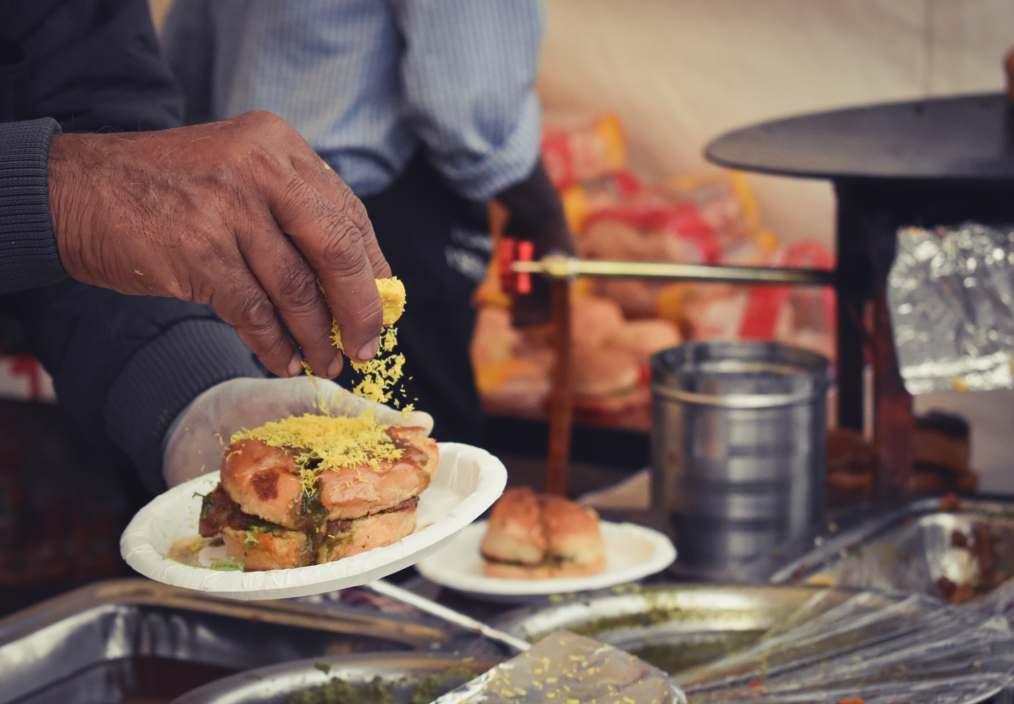
Monsoons in India are a season of contrasts. On one hand, they bring cool breezes, lush greenery, and the comforting sound of rainfall. On the other hand, they usher in an alarming spike in food and water-borne illnesses. Cholera, typhoid, viral hepatitis, gastroenteritis: the risk of infection surges with the first downpour. The culprit? Contaminated food and unsafe water. According to the Food Safety and Standards Authority of India (FSSAI), monsoons demand heightened food safety awareness, both at home and in public.
If you’ve ever fallen ill after a rainy-day craving, you're not alone. The good news? A few mindful swaps, rooted in FSSAI guidance, can help you stay safe and still enjoy the season.
THE HIDDEN DANGERS OF STREET CRAVINGS
The urge to snack on pani puri, bhel, or pakoras from roadside stalls is almost a monsoon tradition. But it comes with serious risks. Street food is often prepared with untreated water, kept in the open, and served in humid conditions, the perfect storm for bacterial growth. FSSAI warns against consuming chaats, raw salads, juices, and
pre-cut fruits sold in open markets during this season. The threat of contamination by E. coli, Salmonella, and Vibrio cholerae is at its peak.
What to do instead: Satisfy your cravings at home with clean ingredients, boiled water, and hygienic cooking practices. If dining out, choose only FSSAI-licensed, reputable establishments.
GREEN ISN'T ALWAYS GOOD: WHEN TO AVOID RAW
LEAFY VEGGIES
Surprisingly, even healthy greens like spinach, methi, and lettuce pose a risk during monsoons. Their textured leaves trap mud, pests, and microbial contaminants that are hard to wash away. Unless thoroughly cleaned and well-cooked, these vegetables can become disease carriers. Stick to this: Steam or sauté your greens properly, or opt for safer vegetables like gourds, beans, or carrots during peak monsoon months.
SEAFOOD & DAIRY: HANDLE WITH CAUTION
Seafood, particularly shellfish, spoils rapidly in damp, fluctuating temperatures. Improper handling can lead to severe food poisoning. FSSAI advises purchasing fish and meat only
from licensed shops with cold-chain storage. Likewise, dairy items such as milk, paneer, or curd, if sourced from roadside vendors, may be adulterated or exposed to contaminants. Choose smarter: Always check the FSSAI license on packaged dairy, and opt for pasteurised products kept under refrigeration.
SAFE SIPS AND SMARTER SWAPS
Open fruit juices, flavoured drinks, or masala milk served in unclean glassware are best avoided. Contaminated water is the leading cause of hepatitis A and E. Drink only boiled, filtered, or packaged water, and ensure the packaging is sealed and FSSAI-certified. Boost your immunity with warm turmeric milk, herbal kadhas, and Vitamin C-rich fruits like oranges, lemons, and amla; all natural disease fighters.
FSSAI'S GOLDEN RULE: EAT FRESH, EAT CLEAN
Food left outside for long hours becomes a hotspot for microbes. The FSSAI’s golden rule for monsoon eating is simple: eat freshly prepared meals, avoid leftovers, and practice personal and kitchen hygiene at all times. Wash your hands before meals, use clean chopping boards, and cook food thoroughly.
FINAL THOUGHTS: LET THE RAIN WASH WORRIES, NOT INVITE ILLNESS
The rains are meant to revive, not ruin. With rising infection cases during the monsoon, preventive awareness becomes as important as the food we put on our plates. Staying healthy isn’t about restriction; it’s about smart choices rooted in hygiene, freshness, and safety.
Follow FSSAI guidelines. Eat right. Stay well.






From 12 to 651 and Counting GOA’S STARTUP LEAP

In a remarkable transformation over just eight years, Goa has emerged as one of India’s most promising startup destinations. From a mere 12 DPIIT-recognised startups in 2017, the state now proudly hosts 651 registered startups, marking a sharp and consistent rise in entrepreneurial activity across the region. Among these, 310 are led by women, underscoring the inclusive nature of Goa’s evolving innovation ecosystem.
A GROWTH TRAJECTORY WORTH NOTING
The pace of growth in Goa’s startup ecosystem has significantly accelerated in recent years. While the numbers have steadily climbed year-on-year, the last three years in particular have witnessed a remarkable surge. In 2023, Goa added 118 startups to its tally. This rose to 143 in 2024. In just the first half of 2025 alone, another 105 startups have already been recognised. These figures reflect not only the startups recognised by the Department for Promotion of Industry and Internal Trade (DPIIT), but also those supported by Goa’s own Startup & IT Promotion Cell (SITPC), under the Department of Information Technology, Electronics & Communications (DITE&C). This coordinated support has been instrumental in nurturing an environment that welcomes ideators, risk-takers, and change-makers.
SECTORAL DIVERSITY AND RISING IMPACT
Goa’s startup ecosystem spans an impressive
array of sectors, from health-tech and legaltech to electric mobility, tourism, clean energy, and smart infrastructure. The top three sectors include Information Technology (76 startups, 23.46%), Travel & Tourism (45 startups, 13.89%), and Healthcare & Life Sciences (43 startups, 13.27%).
Among the standout names is Spintly, a Goabased smart access control company that has raised nearly �50 crore and expanded into international markets. Contractzy, another emerging player in the legal-tech space, has built a patented online dispute resolution platform that is drawing national attention. BLive, which began as an EV tourism startup, has now grown into a fullstack electric vehicle ecosystem with over �18 crore in funding. And Molbio Diagnostics, headquartered in Goa, became the state’s first unicorn with its widely recognised molecular diagnostic platform that rose to prominence during the pandemic. Further strengthening Goa’s deep-tech credentials is India’s first commercial 3D printing facility, housed in the state, underscoring its capacity to support cuttingedge innovation.
BUILDING
THE BACKBONE: POLICY, INFRASTRUCTURE & ACCELERATION
The backbone of Goa’s startup success lies in its policy-driven ecosystem. The Goa Startup and IT Policy, championed by Shri
Rohan A. Khaunte, Hon’ble Minister for Information Technology, Electronics & Communications, offers a comprehensive suite of benefits: seed grants, R&D incentives, lease reimbursements, and infrastructure subsidies.
Goa also provides startups with robust physical and institutional support: 6 incubators, 2 venture studios, more than 15 co-working spaces, 18 Atal Tinkering Labs, and a fully equipped Maker’s Space. Initiatives such as the Goa Open Innovation Challenge and the Goa Market Access Expo connect startups with government departments, investors, and industry leaders, paving the way from concept to pilot to scale.
WHAT LIES AHEAD
As Goa’s startup landscape enters a new phase, the focus has now shifted toward accelerating high-potential ventures. The newly launched Goa Startup Accelerator Program, which opened applications on July 22, 2025, aims to support 30 startups, including five registered in Goa and 25 operating locally. This five-month mentor-led program will offer expert guidance in product development, market entry, fundraising, and business scaling. With each passing year, Goa’s startup ecosystem is not just expanding, it’s maturing, diversifying, and making its mark nationally and globally. Backed by visionary leadership, inclusive policy, and homegrown success stories, Goa is well on its way to becoming India’s next innovation hub.
FOLLOW

Goa Technology Association's Landmark Awards Night 2025 BRIDGINGVISION&VELOCITY

In a state where palm-fringed beaches and a relaxed way of life often dominate the headlines, the Goa Technology Association (GTA) is scripting a parallel narrative — one of ambition, innovation, and resilience. On a significant evening that underscored the rise of Goa's digital economy, GTA hosted its much-awaited Annual General Meeting and Awards Night 2025, a confluence of industry leaders, policymakers, and tech entrepreneurs committed to shaping Goa's future through technology. Held in the distinguished presence of Shri Rohan Khaunte, Hon'ble Minister for Information Technology, Government of Goa, the event was a mirror to how far the state has come in nurturing its tech ecosystem — and how much farther it can go.
HONOURING THE TRAILBLAZERS: CELEBRATING A DECADE OF GRIT
At the heart of the evening was a powerful gesture — the felicitation of 25 Goan IT trailblazers. These entrepreneurs, who have sustained and scaled IT, ITeS, and BPO companies in Goa for over a decade, were recognised not just for longevity, but for leadership, persistence, and belief in Goa's potential. In an era of rapid disruption, their journey stands as a testament to what vision, community, and conviction can create when rooted in local soil.
This moment of recognition was more than ceremonial — it was symbolic of the maturing Goan tech ecosystem that continues to grow against the odds, often quietly, but with undeniable impact.
STRATEGIC COLLABORATIONS: BRIDGING GAPS, BUILDING
FUTURES
The GTA event wasn't just a look back — it was a firm step forward. Two landmark Memorandums of Understanding (MoUs) were signed, setting the tone for an ecosystem that thrives on collaboration and shared purpose.
The first, between GTA and the Directorate of Higher Education, Government of Goa, is poised to reshape how students engage with the tech industry. Focused on reducing the academia-industry divide, the partnership promises to usher in job fairs, internships, skill development programs, and tech events across Goan colleges — preparing the youth not just to get jobs, but to create them. The second MoU, signed with the Electronics and Computer Software Export Promotion Council (ESC), marks a strategic alignment with national priorities. By offering Goan companies a platform to increase exports, understand emerging technologies, and adapt to global benchmarks, this partnership positions Goa as a player, not just a spectator, in the larger Indian IT growth story.
NEW LEADERSHIP, RENEWED PURPOSE
Another milestone at the event was the election of Mr. Mangirish Salelkar as GTA's President for a third term. A seasoned entrepreneur and a vocal champion of local tech talent, Mr. Salelkar will now lead a refreshed and dynamic Managing Committee determined to build on GTA's momentum.
Speaking at the gathering, he said, “Our journey is rooted in the belief that Goa can be more than a destination — it can be a powerhouse of technology, talent, and transformation. As we honour our IT heroes and partner with visionary institutions, GTA reaffirms its commitment to creating sustainable tech opportunities, building capabilities, and shaping the future of Goa's digital economy.”
His vision aligns with that of Minister Rohan Khaunte, who emphasized the importance of enabling frameworks and collaborative growth. “Goa's IT ecosystem needs enablers who can bridge the gap between ambition and execution. GTA has consistently stepped up to champion this cause by promoting local entrepreneurs, building academia linkages, and aligning with national growth agendas,” he remarked.
GOA'S MOMENT IN THE SUN — POWERED BY CODE AND COLLABORATION
Beyond the applause, handshakes, and commemorative photographs, the GTA AGM & Awards Night 2025 reflected something deeper — the emergence of a collective identity for Goa's tech community. It showcased that behind the headlines of tourism and real estate, another sector is quietly — yet powerfully — taking root. With homegrown companies scaling up, students getting industry-ready, and strategic partnerships guiding policy, Goa's tech narrative is no longer a footnote — it's a headline in the making.
Incredible Goa, as the state's premier society magazine, recognises this shift not just as a moment of celebration, but as a call to continue documenting the people and platforms shaping Goa's future. As the sun sets on the sands and rises behind computer screens, it's clear that Goa's next big revolution may just be written in code.


NAVELIM SPORTING CLUB CRUISE INTO SEMI-FINALS WITH 2-0 WIN OVER DON BOSCO ORATORY

Navelim Sporting Club booked their place in the semi-finals of the Anil Kamat Memorial Football Tournament with a convincing 2-0 win over Don Bosco Oratory, Fatorda, in a thrilling quarter-final encounter held at the Our Lady of Hope Church ground in Chinchinim on Friday.
The clash was eagerly anticipated, and both teams brought high energy and purpose from the opening whistle. Navelim Sporting Club wasted no time asserting pressure, as Joyson Coutinho fired a threatening free-kick in just the first minute, setting the tone for an intense battle.
The clash was eagerly anticipated, and both teams brought high energy and purpose from the opening whistle. Navelim Sporting Club wasted no time asserting pressure, as Joyson Coutinho fired a threatening free-kick in just the first minute, setting the tone for an intense battle.
Don Bosco Oratory responded with equal intensity, pushing forward and crafting chances of their own. Their best opportunity in the opening half came in the 21st minute when Furtado unleashed a powerful effort that was brilliantly saved by Navelim’s alert goalkeeper Mehboob. It was one of several
key interventions from the custodian, who proved vital in keeping his side ahead throughout the match.
Despite the even nature of the early exchanges, it was Navelim SC who found the breakthrough. In the 28th minute, Meliston Dias showed great composure inside the box, calmly finishing to give his team a 1-0 advantage. The goal was a product of sustained pressure and clinical execution, and it gave Navelim the momentum heading into halftime.
The second half began with Don Bosco Oratory displaying greater urgency as they searched for an equaliser. They nearly found it in the 33rd minute when Cliff Barretto rifled a shot towards goal, but Mehboob once again stood tall to deny the effort, underlining his standout performance between the posts.
As the match wore on, Navelim continued to show better structure and discipline. The second goal was a heavy blow for Don Bosco Oratory, who had looked promising during their attacking spells but lacked precision in the final third.
Don Bosco made a late push to claw their way back into the contest. In the 58th
minute, Valito Miranda came close to scoring, but substitute keeper Hussain made a reflex save to preserve the clean sheet. Just a minute later, Clencio’s dangerous free-kick offered another glimmer of hope, but Navelim’s defence held firm till the final whistle.
Navelim Sporting Club’s advancement is a testament to their tactical discipline and ability to absorb pressure while capitalizing on key moments. Coach and team management will be particularly pleased with how the team maintained composure under pressure, especially in the face of Don Bosco’s aggressive second-half resurgence. Don Bosco Oratory will undoubtedly feel disappointed with the result, having created enough chances to at least threaten the outcome. Their failure to convert pressure into goals, however, proved costly. Coach and players alike will take heart from their competitive display, but will also recognize the need for greater sharpness in attack. Meanwhile, the tournament organizers and fans will be hoping for more such highenergy contests as the tournament reaches its decisive stages. The quarter-finals have set a high benchmark for quality, and the remaining teams will be eager to rise to the occasion. For now, Navelim Sporting Club can enjoy a well-earned victory, knowing they have the momentum and the squad depth to make a serious run for the title.
FOLLOW US ON




ITAT HOSTS ALL INDIA MEMBERS' CONFERENCE 2025 IN GOA, CELEBRATING 84
YEARS OF TAX
JUSTICE

Goa recently played host to a landmark event in India's judicial calendar—the All India Members' Conference 2025 organized by the Income Tax Appellate Tribunal (ITAT) at the Goa Marriott Resort & Spa, Miramar The two-day conference, held on July 12–13, marked the 84th Foundation Anniversary of India's premier quasi-judicial body in direct taxation.
The conference brought together Hon'ble Members of ITAT from across India, senior government officials, legal experts, and tax professionals for insightful discussions on the evolution of tax law and the future of tax adjudication The Inaugural Session was graced by Shri C. P. Radhakrishnan, Hon'ble Governor
of Maharashtra, as Chief Guest, and Shri Arjun Ram Meghwal, Hon'ble Minister of State (Independent Charge) for Law & Justice, as Guest of Honour.
O t h e r e m i n e n t a t t e n d e e s included Justice Ashwin Damodar Bhobe (Bombay High Court), Shri Tushar Mehta (Solicitor General of India), and CA Charanjot Singh Nanda, President of the Institute of Chartered Accountants of India (ICAI).
T h e c o n
e r e n c e f e a t
e d technical sessions on critical legal reforms, including deliberations on the upcoming Income Tax Bill, 2025, and a Stakeholders' Meet to promote dialogue between judiciary, tax departments, and legal professionals.
The Valedictory Session, held on July 13, was addressed by leading dignitaries including Dr. Anju Rathi Rana, Secretary of Legal Affairs, and Shri Ravi Agrawal, Chairman of CBDT.
By choosing Goa as the venue,
ITAT underscored the state's rising stature in India's governance and legal discourse. The event not only celebrated ITAT's remarkable legacy but also spotlighted Goa's growing role in hosting highimpact national events.

ASSOCHAM GOA WRAPS UP 'BRIDGING HORIZONS' WITH INSIGHTFUL AI-FOCUSED VALEDICTORY SESSION

The Associated Chambers of Commerce & Industry of India
( A S S O C H A M ) G o a S t a t e
D e v e l o p m e n t C o u n c i l , i n
c o l l a b o r a t i o n w i t h t h e Department of Information Technology, Electronics & Communications, Government of Goa, successfully concluded its
transformative initiative, Bridging Horizons: The Confluence of Industry, Institute & Innovation, with a grand valedictory session on 7th July 2025 at MES Vasant Joshi College, Zuarinagar. Themed “Future Forward: AI Shaping Industries,” the event brought together leading voices
from the state's innovation ecosystem Chief Guest Shri Mauvin Godinho, Hon'ble Minister of Industries, Trade & Commerce, underscored the importance of embracing artificial intelligence as an enabler rather than a threat.
“AI is a powerful tool,” he said, “but it is human intelligence—Your Intelligence (YI)—that will always lead. Goa is committed to building a future where our youth become creators of technology, not just consumers.”
The event featured insightful addresses by renowned industry leaders and entrepreneurs including Dr Manasvi Kamat, Principal of MES College; Shri Mangirish Salelkar, CEO of UMANG Group; Shri Sagar Govekar, MD of EthernetXpress; Capt. Ruchin Dayal, CEO of eDOT Solutions; Shri Yashvit Naik, Cofounder of Onstro; Shri Syam Ivaturi, Co-founder of DishaAI; Shri Gaurav Dixit, CEO of Skillops.ai; and Shri Damodar Pai
Patnekar, CEO of Bodhami. Launched in September 2024 at Goa Business School, this series addressed pivotal themes such as Industry 4 0, startup culture in Goa, and future-ready skills. Through dynamic dialogues and campus engagements, Bridging Horizons has successfully fostered innovation, empowered students, and strengthened industryacademia ties laying the foundation for a tech-forward Goa.


Goa-based IT company Kilowott has taken another major step in its expansion journey by launching a new 40-seater office in Margao, located at the FiiRE Coworking Space & Skilling Centre in Nehrunagar. This strategic move follows one of the state's largest campus recruitment drives,
r e i n f o r c i n g K i l o w o t t ' s commitment to harnessing
homegrown talent and nurturing Goa's position on the global tech map.
Founded by the Fernandez brothers, Kilowott has emerged as one of Goa's most promising tech companies, with a business footprint spanning Asia, Europe, and North America. While their global reach continues to grow, Kilowott is also strengthening its

l o c a l p r e s e n c e , ensuring Goan youth have access to quality e m p l o y m e n t opportunities without leaving their home state.
T h e n e w M a r g a o
o f f i c e w a s inaugurated in the p r e s e n c e o f k e y dignitaries, including P r a t i m a D h o n d (President, GCCI), N a t a l i n a V a z (Chairperson, Model's Group), DS Prashant (CEO, Startup and IT Promotion Cell), and Jose Manuel Noronha ( C h a i r m a n , G o a State Innovation Council), among others.
“This expansion is a reflection of our commitment to Goa's talent ecosystem, especially in South Goa,” said Caleb Fernandez, Cof o u n d e r o f K i l o w o t t T h e sentiments were echoed by Pratima Dhond, who noted that companies like Kilowott are
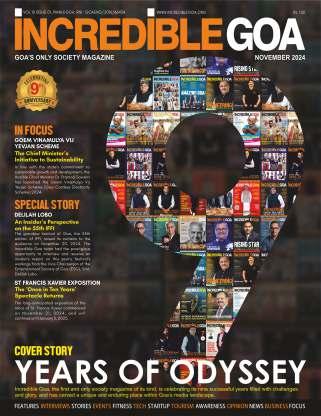

critical in creating high-quality jobs that inspire Goan youth to build careers in the state.
K i l o w o t t ' s r e c e n t c a m p u s recruitment drive across nine institutes led to over 20 students receiving job offers, reinforcing its focus on investing in young talent. The company ' s new base in Dubai's Meydan Free Zone further signals its intent to scale globally while staying rooted in Goa. With its continued growth and focus on local empowerment, Kilowott is fast becoming a symbol of Goa's digital ambition and startup success story.
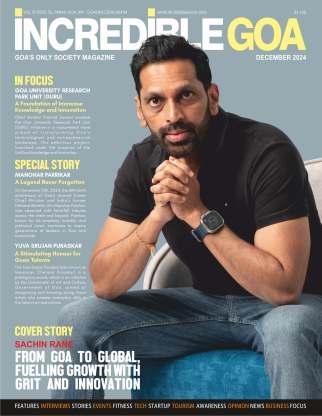


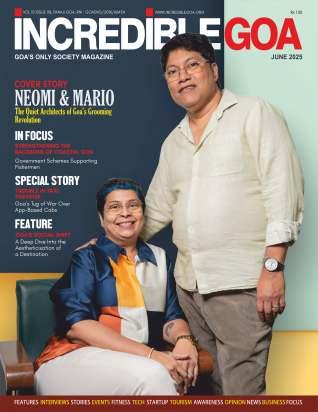

By Norbert D’Souza
WHY EXERCISE IS WISE FOR TEENS

You've probably heard countless times how exercise is "good for you." But did you know that it can help you feel good too? Getting the right amount of exercise can rev up your energy levels and even help improve your mood. WHAT ARE SOME BENEFITS OF EXERCISE?
Like other muscles, the heart enjoys a good workout. Aerobic exercise is any type of exercise that gets the heart pumping and gets you breathing harder. When you give your heart and lungs this kind of workout regularly, they get stronger and are better at getting oxygen (in the form of oxygen-carrying blood cells) to all parts of your body.
Experts recommend that teens should get 60 minutes or more of moderate to vigorous physical activity each day. Here are some reasons why: Exercise benefits every part of the body, including the mind Exercise improves brain health and learning. It can help people sleep better. When you exercise, your body makes chemicals that help you feel good. Exercise lowers your chances of depression and decreases feelings of anxiety. Plus, exercise can give you a real sense of accomplishment and pride at having achieved a goal — like mastering a new dance routine or beating an old time in the 100-meter dash.
Exercise helps people keep a healthy weight and lower their risk of some diseases Exercising regularly can help prevent weight gain, type 2 diabetes, heart disease, and high blood pressure. Bone-strengthening exercise — like jumping, running, or lifting weights — can help keep bones strong.
good workout. Aerobic exercise is any type of exercise that gets the heart pumping and gets you breathing harder. When you give your heart and lungs this kind of workout regularly, they get stronger and are better at getting oxygen (in the form of oxygencarrying blood cells) to all parts of your body.
If you play team sports, you ' re probably getting at least 60 minutes or more of moderate to vigorous activity on practice days. Some team sports that give you a great aerobic workout are basketball, football, hockey, and rowing.
But if you don't play team sports, don't worry — there are plenty of ways to get aerobic exercise These include cycling, running, swimming, dancing, tennis, and fast walking.
W H A T A B O U T S T R E N G T H TRAINING?
Being flexible may also help improve a person's sports performance. Some activities, like dance or martial arts, require great flexibility. But increased flexibility also can help people perform better at other sports, such as football.
Sports and activities that encourage flexibility are easy to find. Martial arts like karate, gymnastics, and yoga are good choices. Stretching after your workout will also help you improve your flexibility.
HOW
CAN I KEEP IT GOING?
One of the biggest reasons people drop an exercise program is lack of interest: If what you're doing isn't fun, it's hard to keep it up. But there are many different sports and activities to try to see which one inspires you. If you need a little more motivation, take a class, join a team, or find an exercise partner to help keep you on track. Talk to someone, like a coach or fitness expert at a gym, who can help you get started on a program that's right for you and your level of fitness.
Everyone can benefit from moving more and sitting less, even those with disabilities or medical problems like asthma. If you have a health problem or other concern (like being out of shape), talk to your doctor before beginning an exercise plan.
Regular exercise strengthens your heart and lungs and it can strengthen bones, slowing d o w n t h e p r o c e s s o f osteoporosis. It can help you move easily by keeping your joints, tendons and ligaments more flexible. Can help you lose weight when combined with good eating habits or maintain ideal weight by burning excess calories and promote sense of well being.
Exercise can help a person age well. This may not seem important now, but your body will thank you later. Regular exercise improves quality of life — the ability to enjoy things — as you get older. It can improve brain health and reduce the chance of getting Alzheimer's (a brain disease that causes memory loss). Exercising can help prevent falls and injuries from falls.
THREE PARTS OF A BALANCED EXERCISE ROUTINE INCLUDE: AEROBIC EXERCISE, STRENGTH
T R A I N I N G , A N D F L E X I B I L I T Y ACTIVITIES.
HOW TO GET AEROBIC EXERCISE? Like other muscles, the heart enjoys a
The heart isn't the only muscle to benefit from regular exercise The other muscles in your body enjoy exercise too When you use your muscles, they become stronger. Strong muscles are also a plus because they support your joints and help prevent injuries. Musclestrengthening activities can also be bone-strengthening. You don't have to lift weights to make your muscles and bones stronger Different types of exercise strengthen different muscle groups. For example: For arms, try rowing, Pull-ups and push-ups, are also good for building arm muscles.
For strong legs, try running, cycling, rowing, free Squats and leg raises works the legs.
For abdominal and core strength, you can't beat rowing, yoga , planks and crunches.
HOW CAN I BUILD FLEXIBILITY?
Strengthening the heart, muscles, and bones isn't the only important goal of exercise. Exercise can also help the body stay flexible, meaning that your muscles and joints stretch and bend easily.
Considering all the health benefits of being physically active, it's easy to see why exercise is wise. And the great thing about exercise is that it's never too late to start. Even small things can count as exercise — like taking a short bike ride, walking the dog, etc. If you are new to exercise, start with a few minutes a day and slowly build to the recommended amount of at least 60 minutes.



By CAGaurav Kenkre
AGRICULTURE AND GST: EXEMPTIONS WITH HIDDEN COSTS

Rather than blanket exemptions, zero-rating key agricultural products could help. Zero-rating keeps outputs tax-free but allows ITC, reducing costs while maintaining the credit chain.
Alternatively, a tailored “Agri GST Regime” could simplify compliance. Clearer guidelines on what qualifies as “agricultural produce” would also reduce ambiguity.
CA Gaurav Kenkre is a CA in practice for the last 11 years. He is a regular speaker at v a r i o u s p r o f e s s i o n a l organizations, trade bodies, MNCs and Government b o d i e s H e a l s o w r i t e s regularly in local as well as national publications. Besides this he holds various positions in bodies such as ICAI, GCCI, College bodies, Rotary etc.
GST was rolled out in India in the year 2017 At that time, a conscious call was taken to keep the Agricultural sector out of the scope of GST This was done since agriculture is a sector which cannot afford the additional tax and compliance burdens of GST as it provides foodgrains to the masses. Yet, as GST has evolved, this blanket exemption has revealed significant drawbacks, creating inefficiencies and costs
t h a t r i p p l e t h r o u g h t h e agricultural value chain.
WHY AGRICULTURE ESCAPES
GST—AND WHAT IT MEANS
M o s t o f t h e u n p r o c e s s e d agricultural products, like fresh fruits, vegetables, grains, milk, and eggs, are exempted from the levy of GST.
While this is commendable, the issue is that this is an EXEMPTION and not ZERO RATING. Thus, all the inputs, capital goods and services which are consumed to produce above, are liable to GST and the farming sector has to bear this GST, and it does not get any input tax credit. This raises cultivation and processing costs, which either cut into farmers' earnings or inflate consumer prices.Fertilizers, tractors, pesticides all carry a GST impact and all of this, is currently born by
the farmer As his produce is exempted, he is unable to claim any of the GST charged to him, as credit Thus this GST gets factored into the cost.
THE PACKAGING PUZZLE
GST and the rate on goods which unpacked, or prepacked, labelled or not, carrying registered trademark or not, has been a continuously evolving concept since the inception of GST.
In July 2022, the GST Council shook things up by taxing prepackaged and labeled food products—like wheat, rice, pulses, or curd—at 5%. Once produce is packaged and labelled per Legal Metrology rules, it's taxable, unlike loose, unpackaged goods. This aimed to close revenue gaps and level the playing field
b e t w e e n b r a n d e d a n d unbranded sellers But it's muddied the waters A small cooperative selling bagged flour now faces tax obligations, while a trader selling loose flour doesn't. Worse, taxpayers are hit with demand notices for the past, wherein they have to prove that the items sold by them in the past, are not prepacked or prelabelled or don't fall within the ambit of GST. This fine line between taxability and exemption is a huge bone of contention and is
only causing more litigations in the industry.
WAY FORWARD
Rather than blanket exemptions, zero-rating key agricultural products could help. Zero-rating keeps outputs tax-free but allows ITC, reducing costs while maintaining the credit chain Alternatively, a tailored “Agri GST R e g i m e ”
d s i m p l i f y compliance Clearer guidelines on what qualifies as “agricultural produce” would also reduce ambiguity.

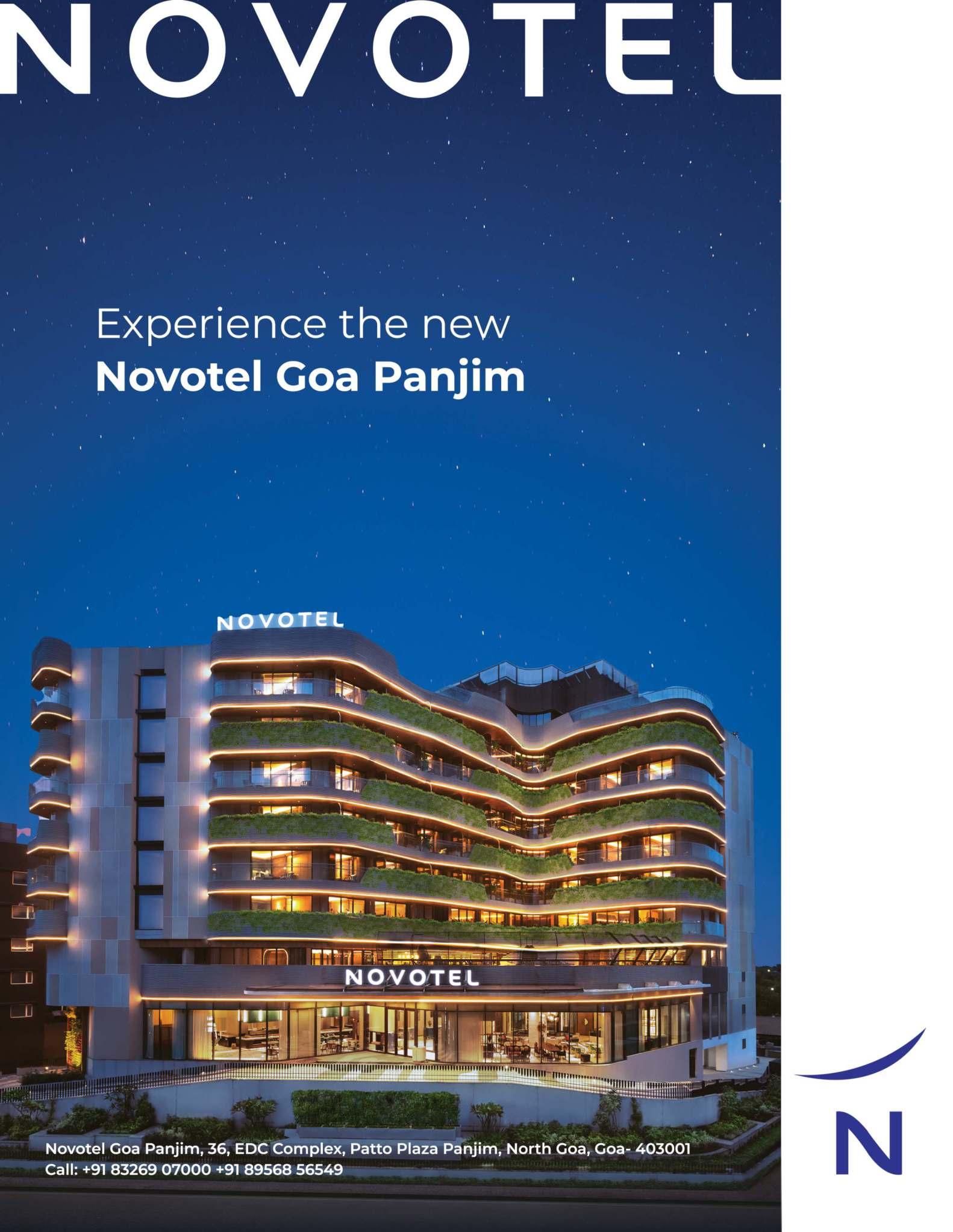

By Prashant Kalra
THE ASSAGAO BUBBLE: WHAT HAPPENED?

THE RISE
Sadly Assagao became a cautionary tale to help us understand that what goes up, can come down, especially if people become emotional about their decisions to buy homes without considering the underlying value. As the landscape of Goa’s real estate continues to evolve, we should remember the rise and fall of Assagao as a real estate destination.
A sleepy village on the way to Anjuna, which had largely been off the tourist radar, suddenly became known for its restaurants and cafes. Then in and around 2018, certain developers had bought land in this village and had started announcing projects Some early movers bought into these.
ridiculous.
THE CRACKS
Prashant is the founder of TPB, a boutique real estate consultancy in Goa, focussing on ultra luxury homes He moved to Goa from Gurgaon in 2019 after his daughter developed breathing issues.
Slowly, word began to spread that Assagao was an upcoming destination with fantastic food and nightlife options while being classier and less touristy than beach destinations like Vagator, Calangute and Anjuna. From 2018-2022, every second buyer was obsessed with the idea of owning a home in Assagao. Some of these buyers genuinely loved the location but mostly, it was a location that became known for its snob value. Everyone wanted to go back to their home towns and brag about owning a home in Assagao over Diwali drinks. To my mind, this sentiment alone contributed to most of the Assagao sales that happened in 2018-2022. Homes sold like samosas in a government building! I remember builders selling homes just with an Assagao location pin Buyers didn’t ask about floor plans or anything The demand was
Then came the oversupply of new projects, the spike in land cost and the spike in new project prices. What followed next made everything worse Almost every single home owner who had bought a home in Assagao before 2024, got encouraged by the price spike and decided to put their homes on the resale market.
THE FALL
The result was an absolute disaster of epic proportions
Here’s what happened The overpriced homes of Assagao were paired with oversupply that led to buyers feeling that Assagao was on its way down. They felt it on their visits to Goa too. Once upon a time, there were 5-7 good restaurants in Assagao and all of them were packed. This made everyone feel Assagao was buzzing. Now there are over 50 new restaurants and many of them are mostly empty.
The cocktail was devastating to buyer sentiment who felt the premium was not worth it So buyers moved on to other locations like Moira, Salvador, Succour and South Goa.
THE CURRENT STATUS
The problem is yet to achieve its peak too. Fresh launches are still coming and the takers are very
limited because they are getting much better value in nearby villages outside of Assagao. Buyers are now increasingly aware of the cracks in Assagao and have all but written off Assagao as a destination. In the meanwhile, many sellers have begun to reduce their price expectations and push for early exits before things get worse. Sadly Assagao became a cautionary tale to help us understand that what goes up, can come down, especially if people become emotional about their decisions to buy homes w
landscape of Goa’s real estate continues to evolve, we should remember the rise and fall of Assagao as a real estate destination.

HEALTH

RECLAIMING HEALTH WITHOUT LOSING THE UTERUS
Modern, Minimally Invasive Solutions for Uterine Fibroids “Do I really have to lose my uterus to get rid of fibroids?” That's a question m o r e w o m e n a r e a s k i n g today—and rightly so.
Uterine fibroids, or leiomyomas, are benign growths found in or around the uterus These are surprisingly common, affecting up to 70% of women by the age of 50. While many fibroids remain symptomless, others cause heavy periods, pelvic pain, bloating, u r i n a r y f r e q u e n c y , a n d sometimes, infertility.
F o r d e c a d e s , hysterectomy surgical removal of the uterus—was seen as the ultimate solution But today, women have better choices.
PROCEDURE MAJOR SURGERY
MINIMALLY INVASIVE
Recovery 4–6 weeks vs 5–7 days
Uterus Removed vs Preserved Fertility Lost Often vs retained
Cost Higher vs Cost-effective
Hospital stay vs Multiple days
Day-care
For women who wish to preserve fertility, maintain bodily integrity, or avoid major surgery, UAE offers a powerful alternative.
B E YO N D U A E : A B L AT I O N THERAPIES FOR FIBROIDS
Interventional Radiology isn't limited to embolization. For select w o m e n , t h e r m a l a b l
minimally invasive option.
RADIOFREQUENCY ABLATION (RFA)
techniques.
That's where teamwork matters. A collaborative approach between gynecologists and interventional radiologists ensures women get comprehensive, well-informed care.
In fact, both the Society of Interventional Radiology (SIR) and t h e A m e r i c a n C o l l
Obstetricians and Gynecologists (ACOG) now recommend UAE and ablation for eligible patients.
K N O W L E D G E I S P O W E R . CHOICE IS FREEDOM.
D e c i d i n g t o u n d e r g o a hysterectomy shouldn't happen in the absence of alternatives
Uterine fibroids, or leiomyomas, are benign growths found in or around the uterus. These are surprisingly common, affecting up to 70% of women by the age of 50. While many fibroids remain symptomless, others cause heavy periods, pelvic pain, bloating, urinary frequency, and sometimes, infertility.
T h a n k s t o I n t e r v e n t i o n a l Radiology (IR), fibroids can often be treated without major surgery and without saying goodbye to the uterus.
LET'S EXPLORE HOW
Uterine Artery Embolization (UAE): A Minimally Invasive Marvel Among the most effective IR procedures is Uterine Artery Embolization (UAE), also known as Uterine Fibroid Embolization (UFE).
HOW IT WORKS?
Under real-time imaging, a tiny catheter is inserted via the wrist or groin. This is guided to the uterine arteries.
Microscopic particles are released to block blood flow to the fibroids.
Deprived of blood, the fibroids gradually shrink and symptoms improve.
A probe is guided into the fibroid using ultrasound or CT. Heat energy destroys fibroid tissue.
O f t e n p e r f o r m e d laparoscopically or through the skin.
Best suited for smaller or fewer fibroids.
MICROWAVE ABLATION (MWA)
Uses microwave energy instead of radio waves. Offers more uniform heat delivery.
Particularly useful for large or dominant fibroids.
Both are outpatient procedures, done with image guidance and minimal downtime.
A N D W H A T A B O U T ADENOMYOSIS?
Women deserve to know all the options especially those that p r o t e c t h e a l t h w i t h o u t compromising their body.
T h a n k s t o a d v a n c e s i n Interventional Radiology, fibroid care is no longer defined by scalpels and long recoveries Whether it's UAE, RFA, or MWA, these treatments offer:
Ÿ Quick recovery
Ÿ Uterus preservation
Ÿ High success rates
Ÿ Minimal pain
Ÿ Lower costs
FINAL THOUGHT: MODERN CARE FOR MODERN WOMEN Medicine today is not just about removing disease it's about preserving dignity, autonomy, and wellness.
Dr Omkar N Churi, DNB
Neurosurgery, Fellowships in Epilepsy and Spine (UK).
F e l l o w s h i p i n Va s c u l a r
N e u r o s u r g e r y ( J a p a n ) .
Multiple awards for best p a p e r i n n a t i o n a l a n d international conferences
Multiple publications in journals.
The procedure typically lasts 1 to 2 hours, is performed under mild sedation, and most women return home the same day. Recovery is swift—most are back to their usual routine within a week.
THE RESULTS
85–90% of women experience significant relief.
Fibroids shrink by 40–60% on average within six months.
UAE vs. Hysterectomy: A Sideb y - S i d e L o o k F e a t u r e Hysterectomy UAE
Many women with fibroids also suffer from adenomyosis, where the uterine lining invades the muscle wall causing pain, cramps, and heavy bleeding. Here's the good news: UAE also helps adenomyosis, especially when it coexists with fibroids. MRI plays a key role in accurate diagnosis and procedural planning.
WHY DON'T MORE WOMEN
K N O W A B O U T T H E S E TREATMENTS?
Sadly, many women are never informed about image-guided treatments. Not all gynecologists are trained in or aware of
With Interventional Radiology, women no longer have to choose between relief and radical surgery They can keep their uterus, heal their symptoms, and move forward on their own terms.

GOA’S PREMIER NEWS MEDIA
WEBSITE
SINCE 2014




